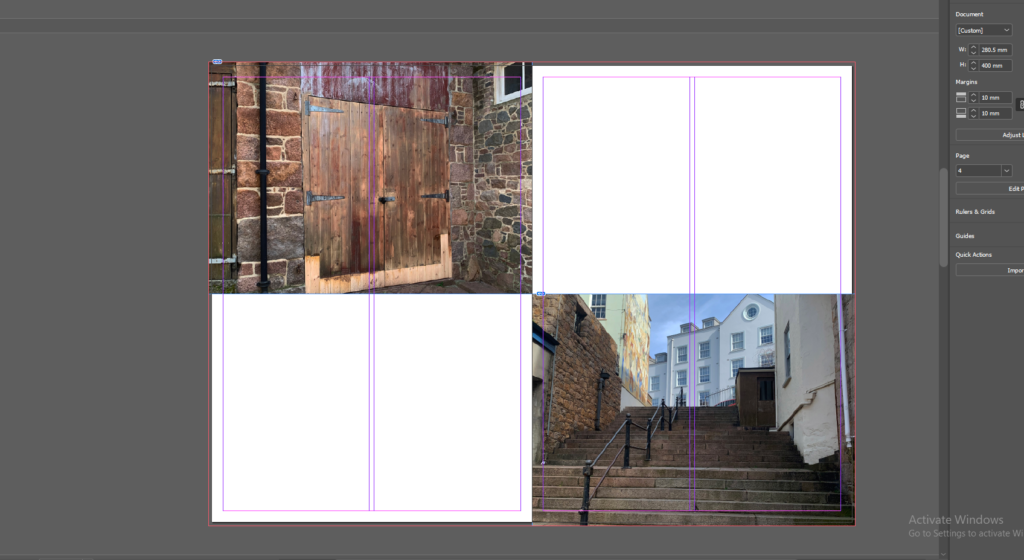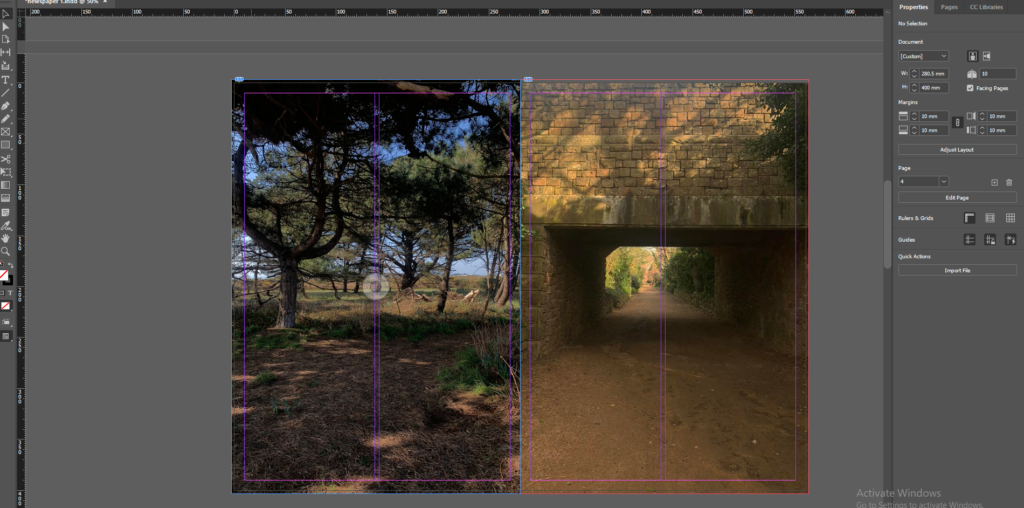Citizenship




Citizenship




To begin my personal study project I decided to experiment with different ideas. I knew I wanted to use childhood images within my photobook so I experimented with different ideas based around childhood and memories. I tried different things like using different tools in photography, photographing landscapes and exploring different ideas and concepts until I found an idea I felt interested me and thoroughly represented my ideas.
First I imported all my chosen childhood images into Lightroom and into a folder within my photobook folder so I could organise all my images for this project in one place.
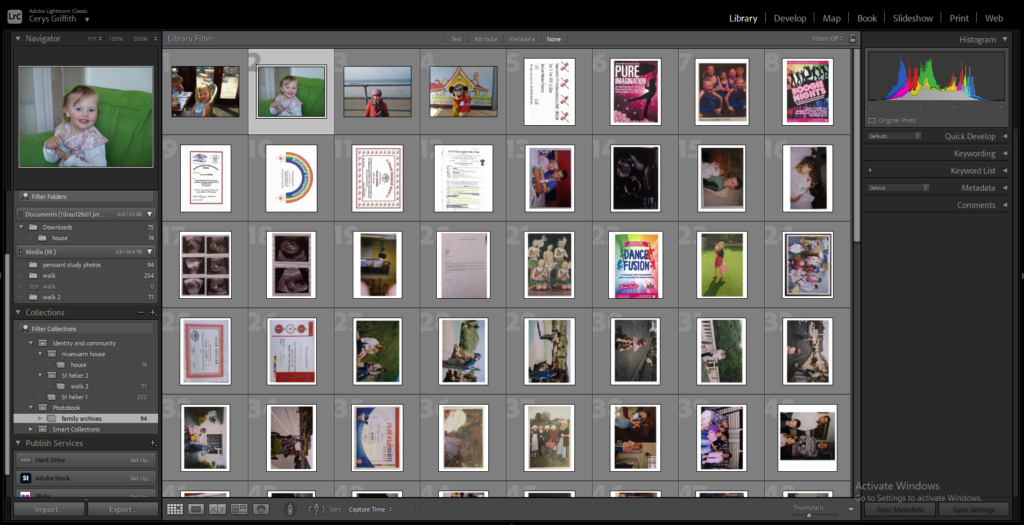
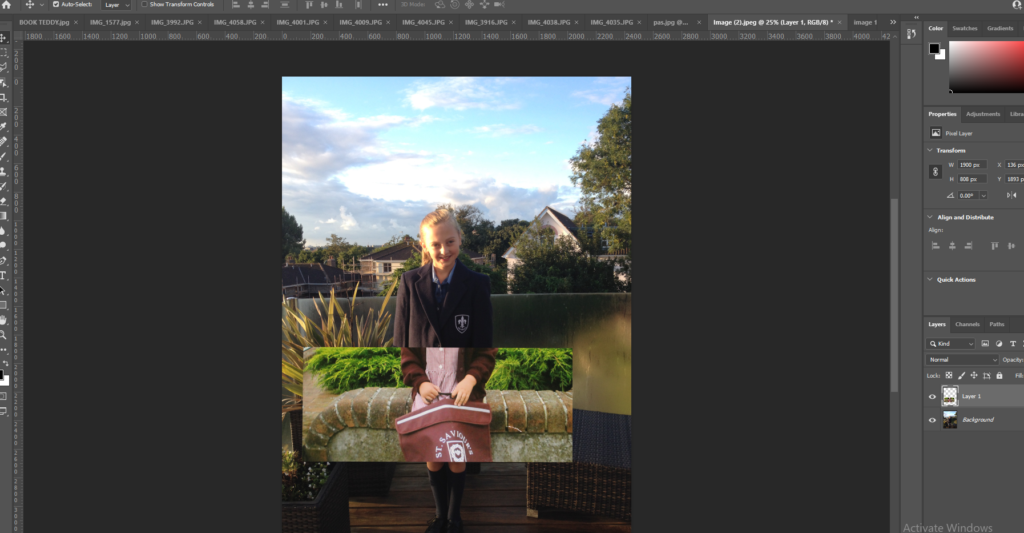
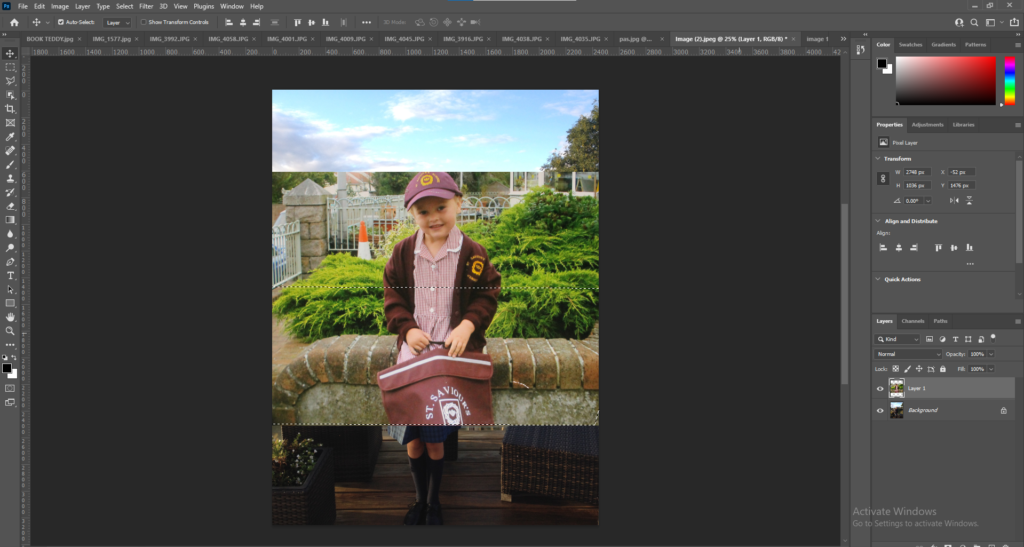
I then began experiment with different tools within photoshop. I started with a basic tool within photoshop by overlapping 2 images and changing the opacity. I liked the final outcome of this image showing what I was and the growth.



I then began experimenting with the polygonal tool and began created different shapes ontop of the image.
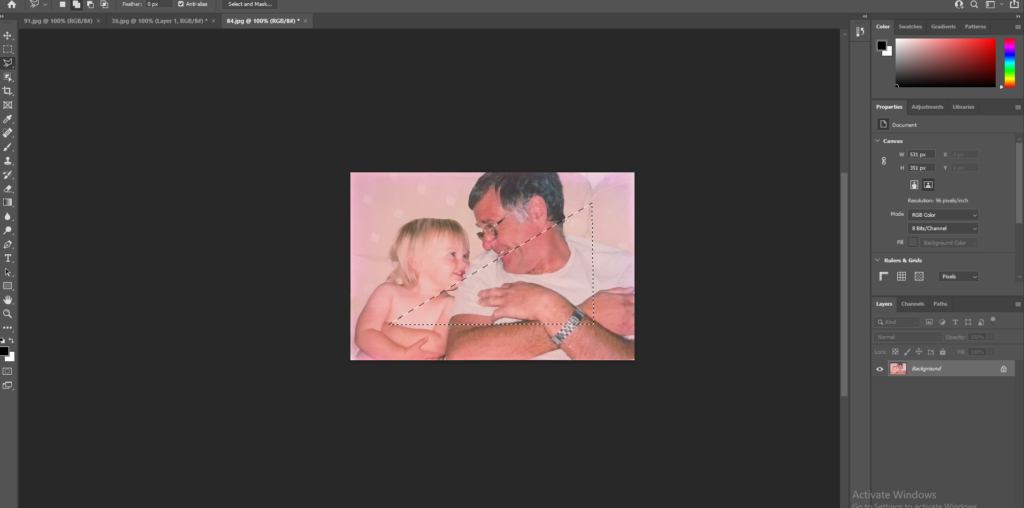

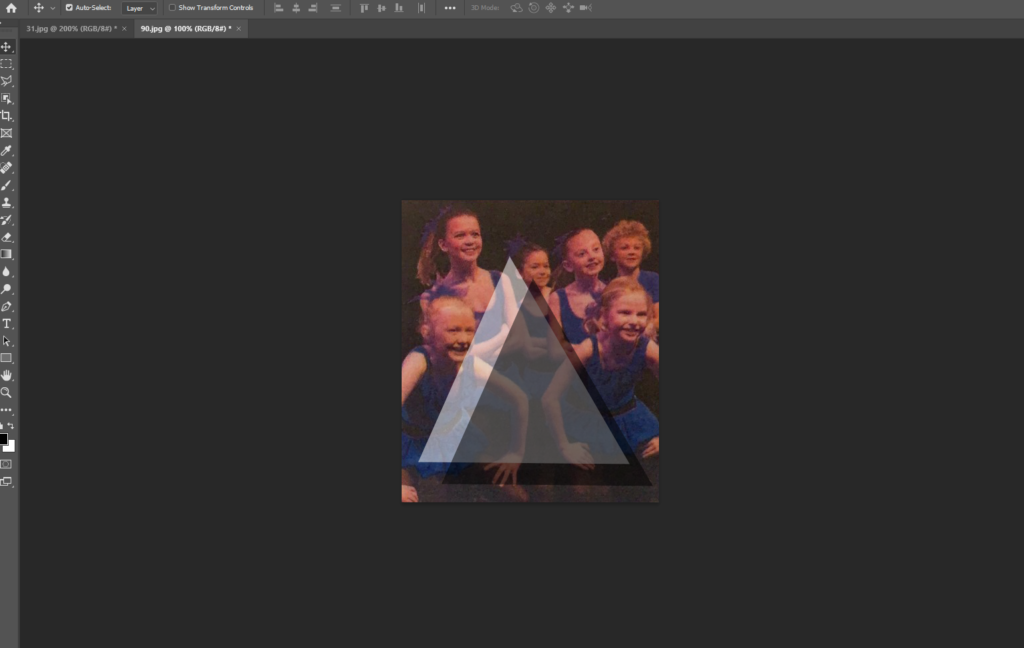
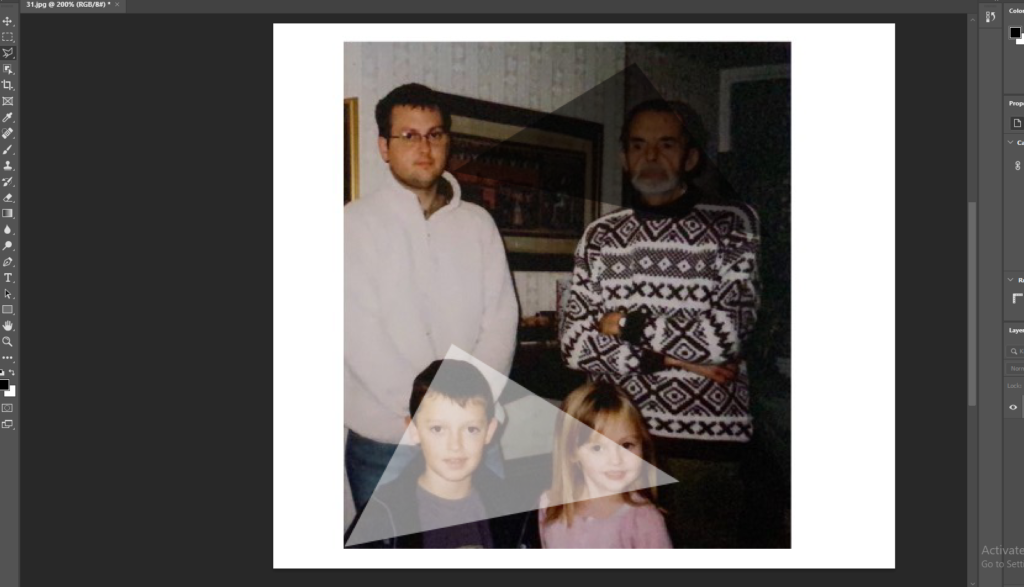
I continued to experiment with the polygonal tool on different images, using different colours shapes and sizes. I liked this experimentation as I felt it added something to the image and gave me freedom to add a different meaning and feel to the image by splitting up the image.
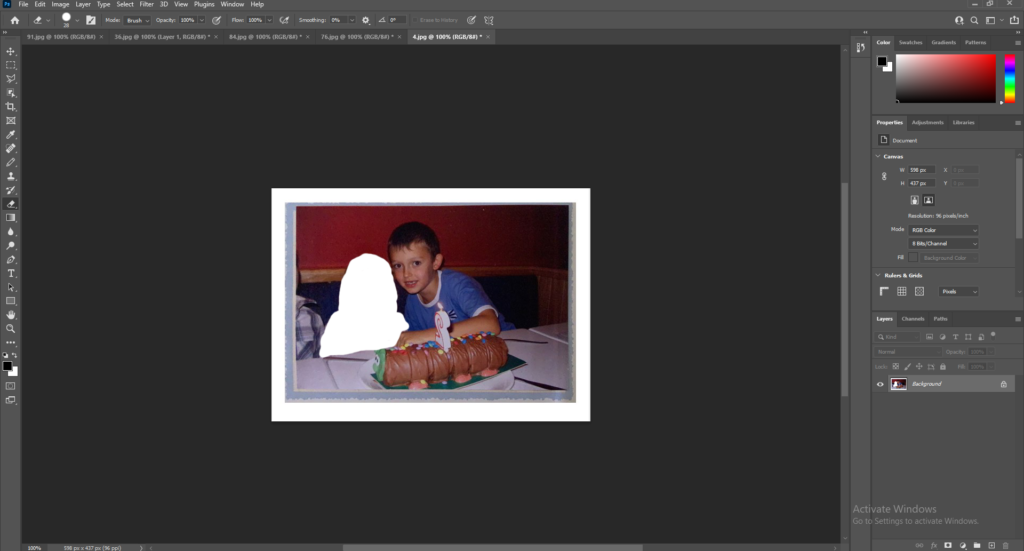
I also experimented with the drawing tool and experimented with cutting people or objects from an image. I didn’t like this option as I felt it looked messy and didn’t represent my intentions well.

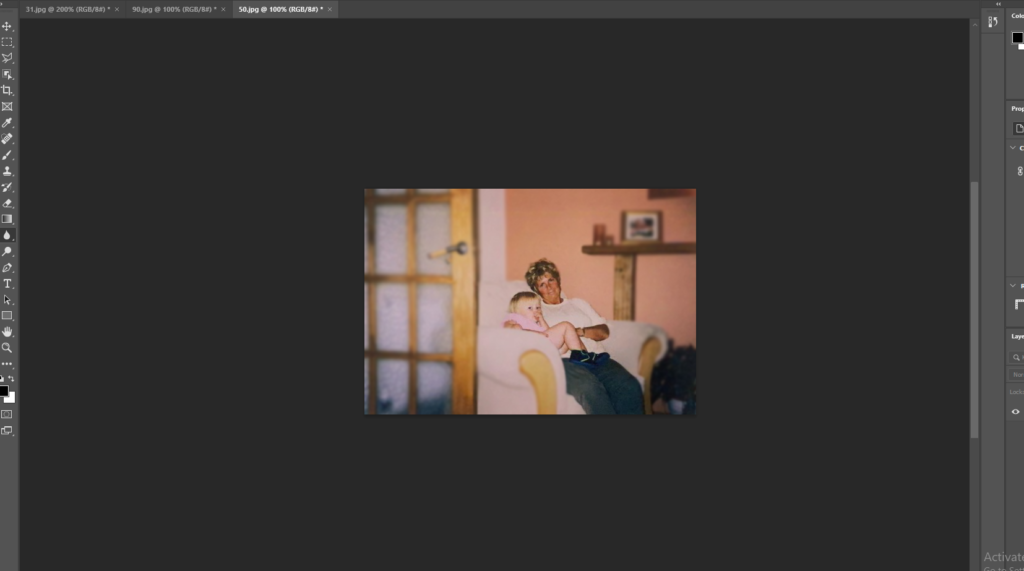
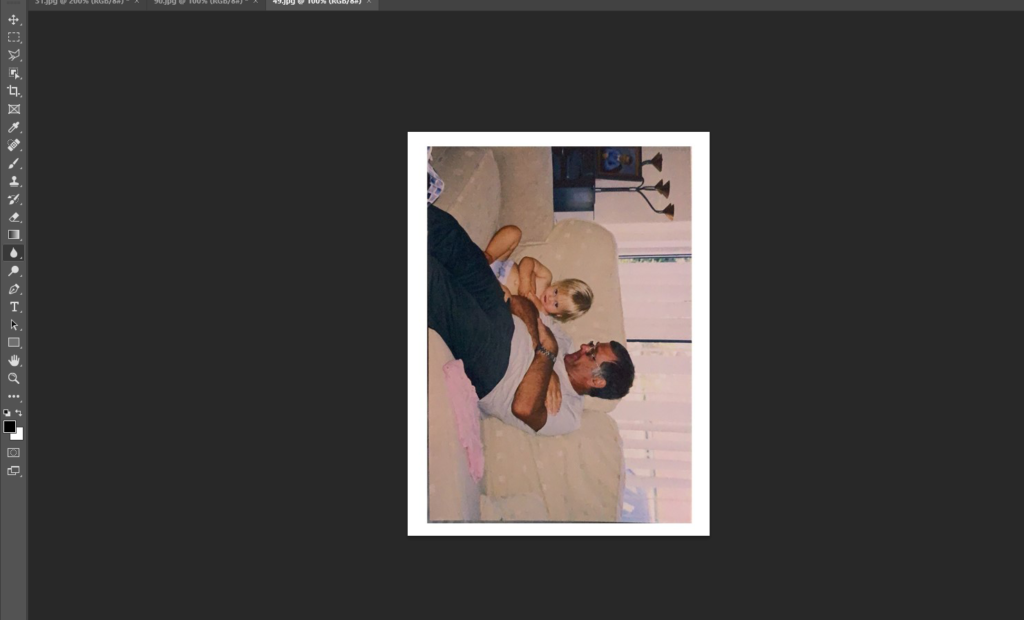
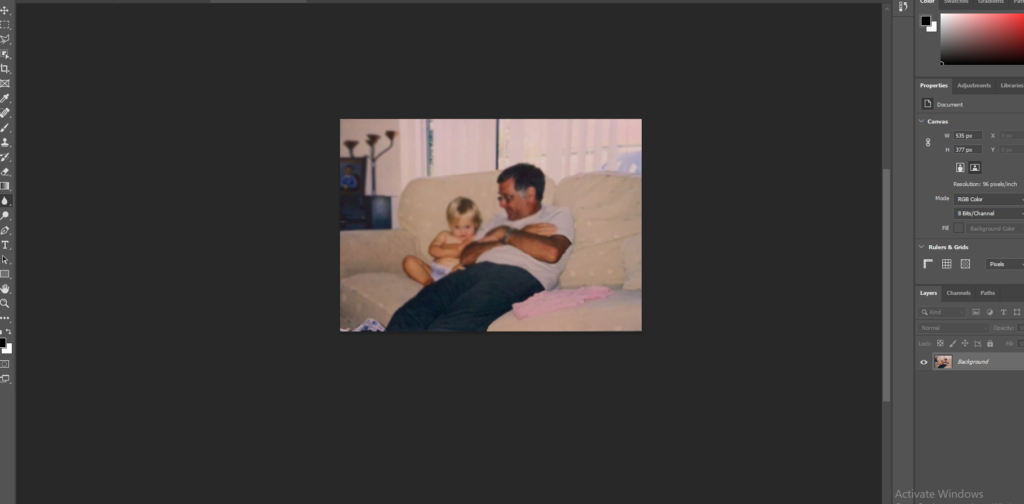
I also decided used the blur tool on a few images. I tried blurring the whole image and just blurring the background of the main subject of the image. I liked this as it created a focus on the subject of the image.
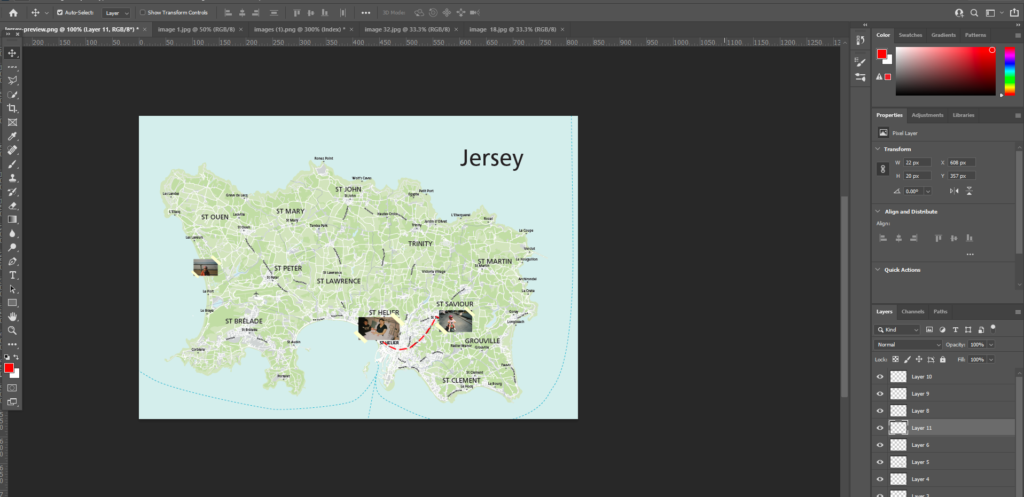
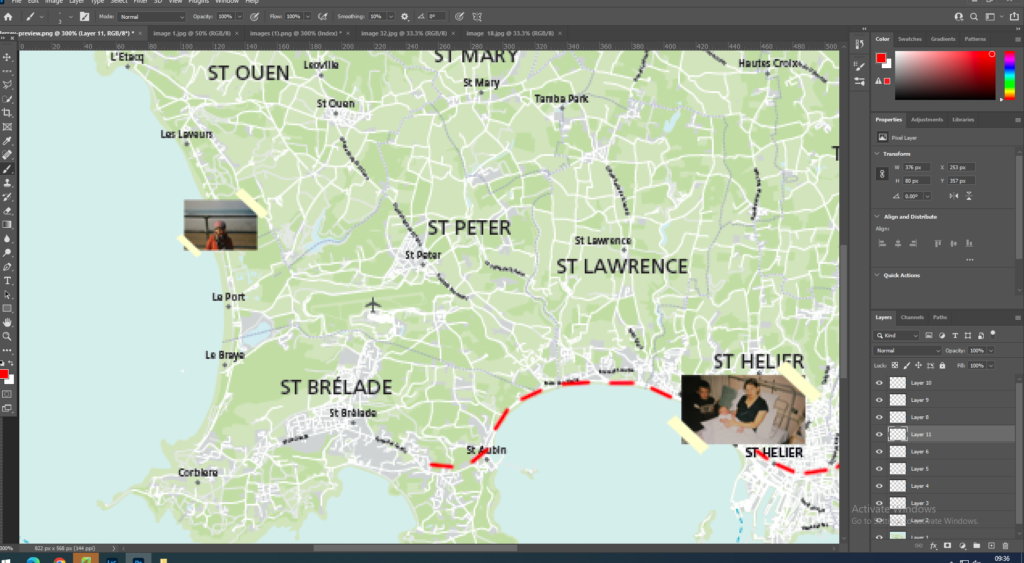

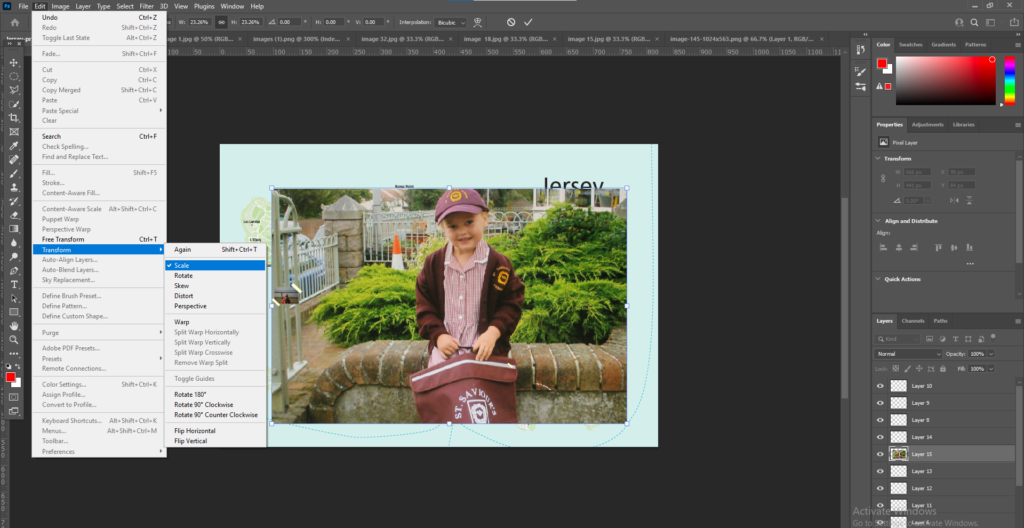
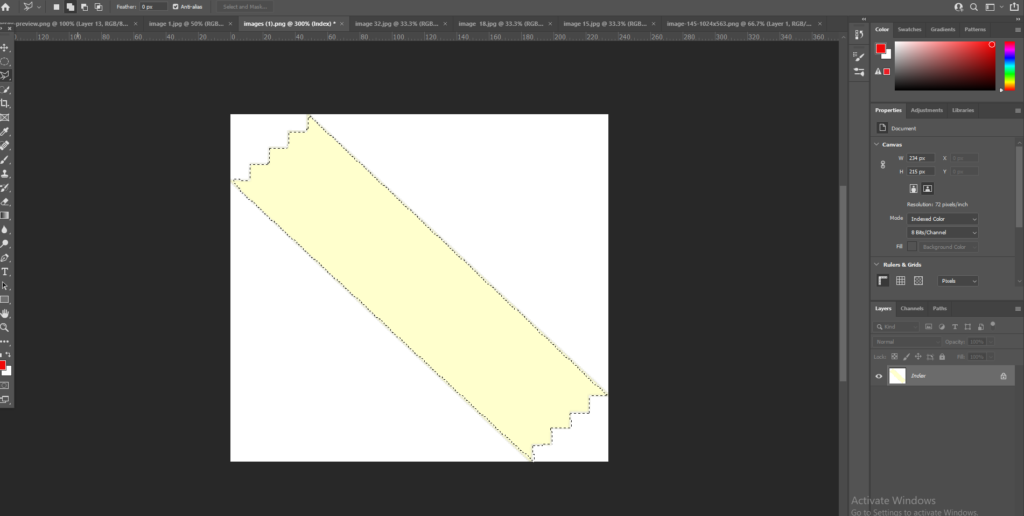
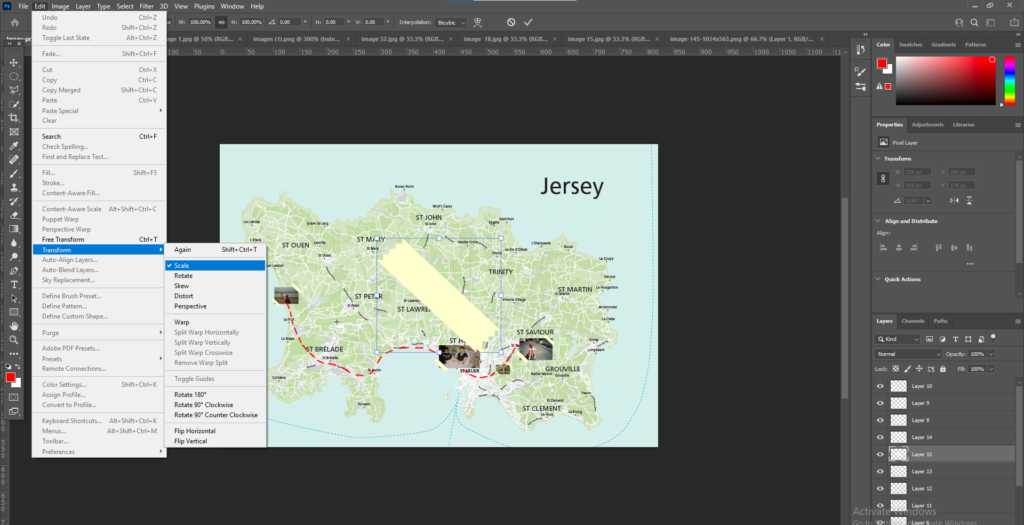
I got an image of a Jersey map and then decided the images I wanted to place on the maps. I then placed these images on the maps and adjusted the scale of the images to the size I wanted by going to Edit > Transform > Scale. I left some images bigger than others as I wanted some images to stand out more than other images.
I then used the brush tool to draw lines between all the images and create a path. I chose to use the colour red for the lines to make the path stand out.
Next I added on some ‘tape’ to make the images look stuck down. I used the ‘Polygonal’ tool to cut out the tape and then pressed Ctrl C to copy the selected part onto the map. I then adjusted the scale doing the same process as I did with the images.

I then took inspiration from an image in Jim Goldbergs book ‘Raised by Wolves’ where he placed images and drew on a map of where he was photographing. I wanted to do this to pin point key images to places around where I live and grew up. I put on images from where I was born to where I first went to school or even core memories.



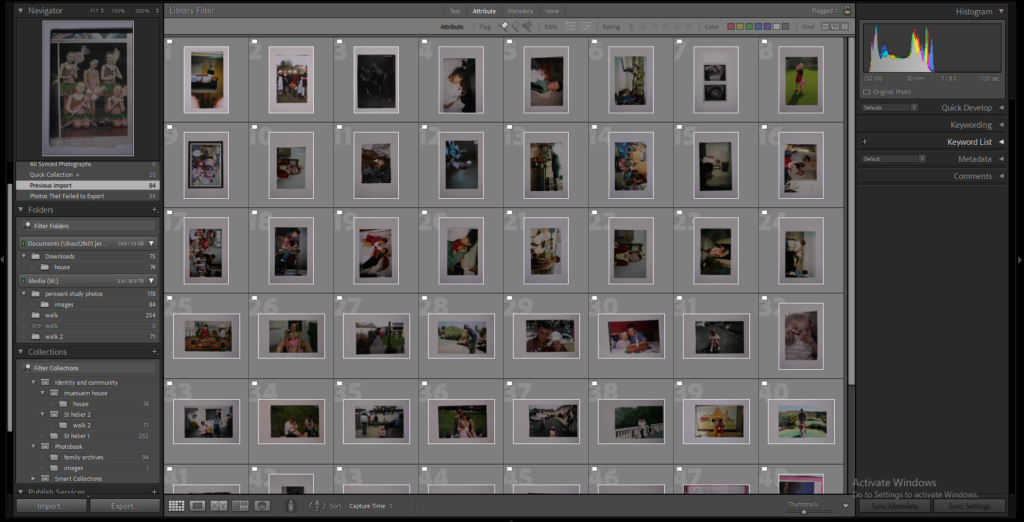
I went through all my images I collected and went through and flagged the images I liked and wanted to start editing and experimenting with. The second image shows all my flagged images.
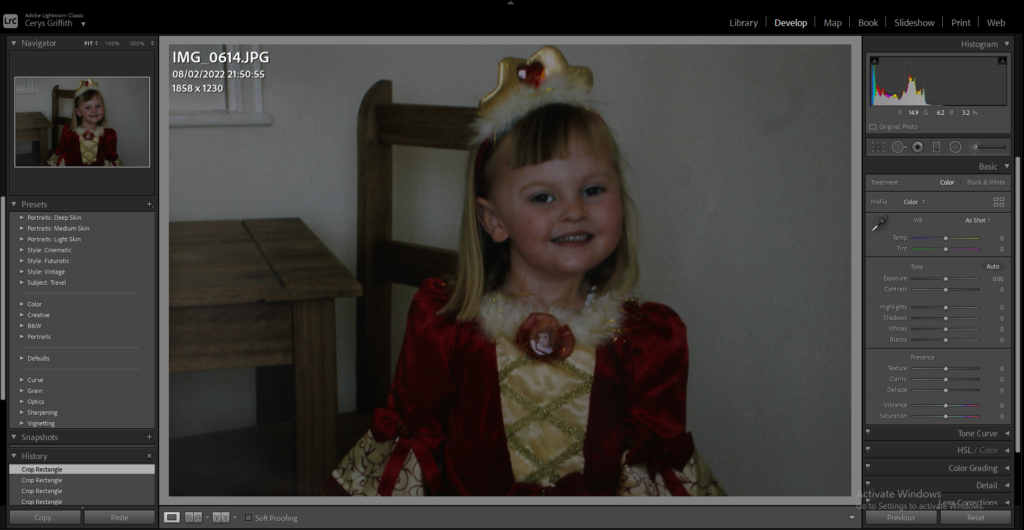
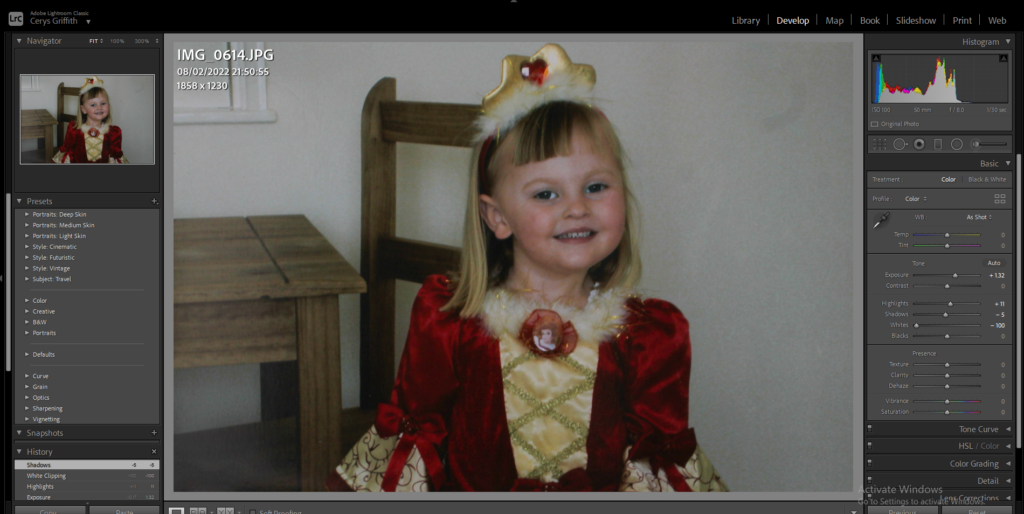
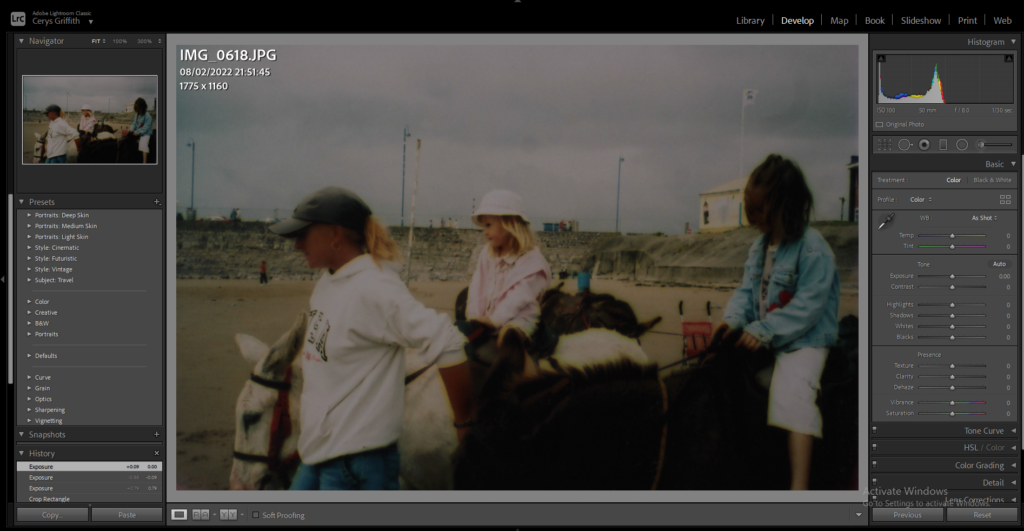

I then went through all my flagged images and began editing them. A lot of my images were very dark so I brightened them up and changed the colours, exposure and contrast on all of the images.
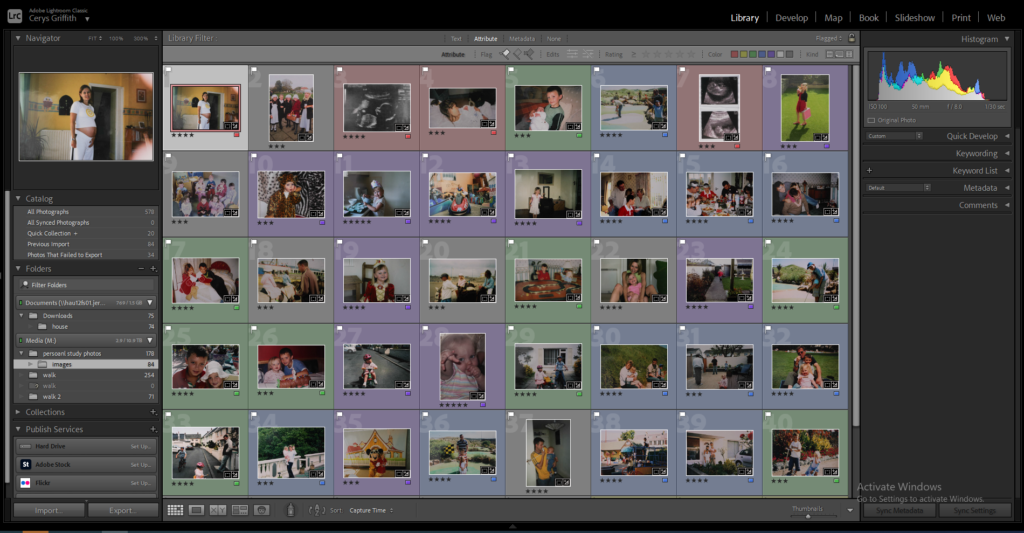
I then decided to colour code my images into different categories, e.g = colours, family members, ages, to make it easier to piece together my final photobook.
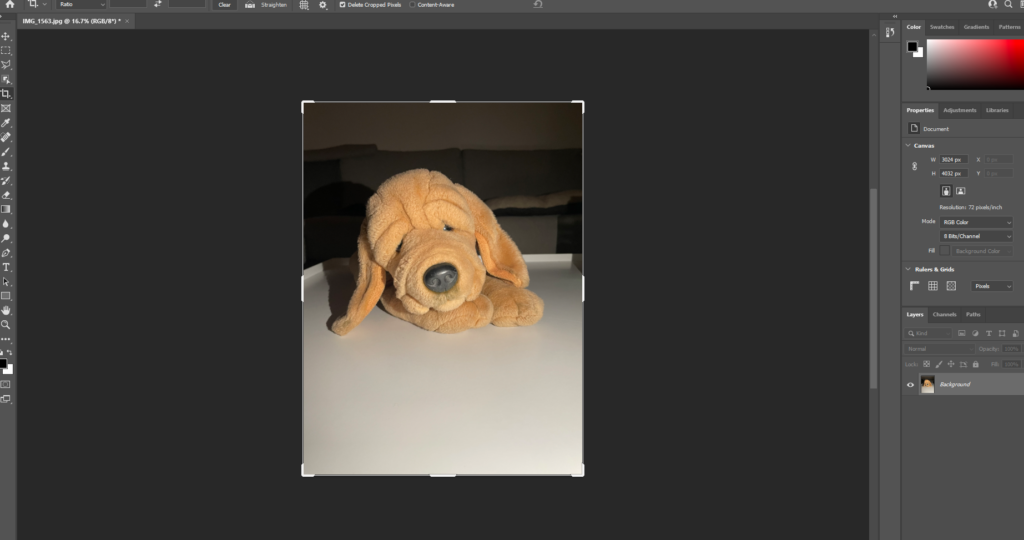
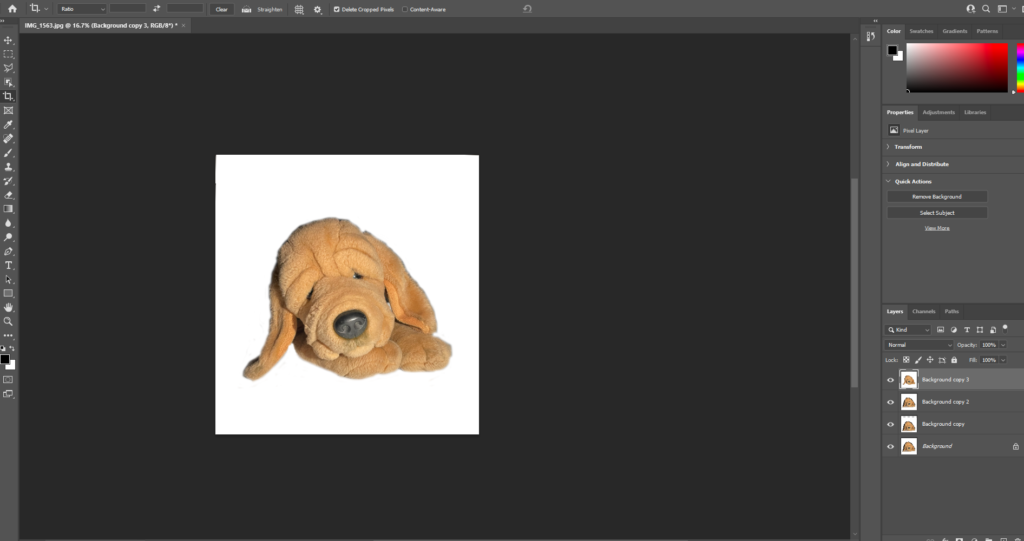

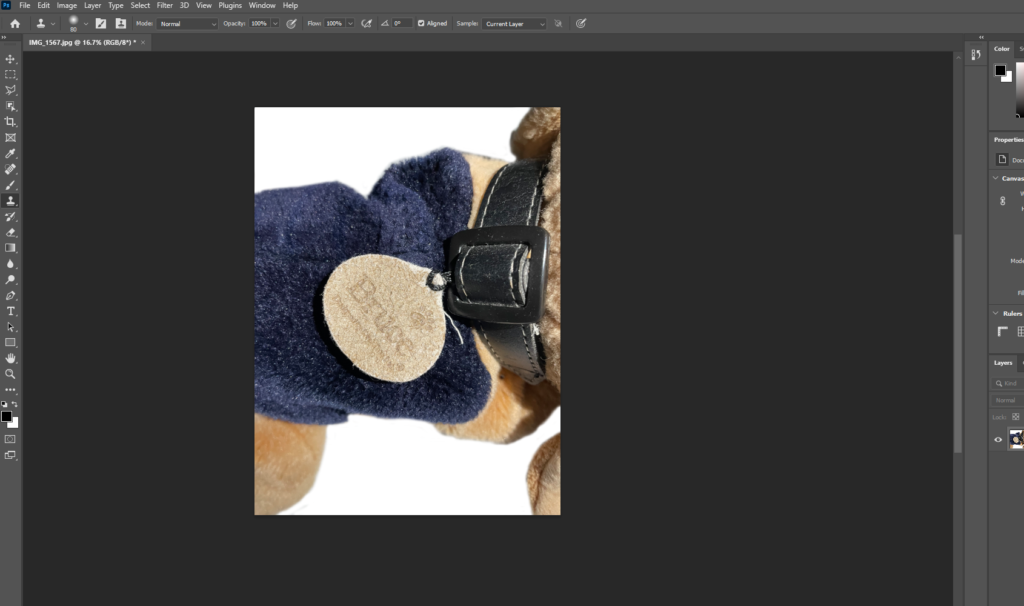

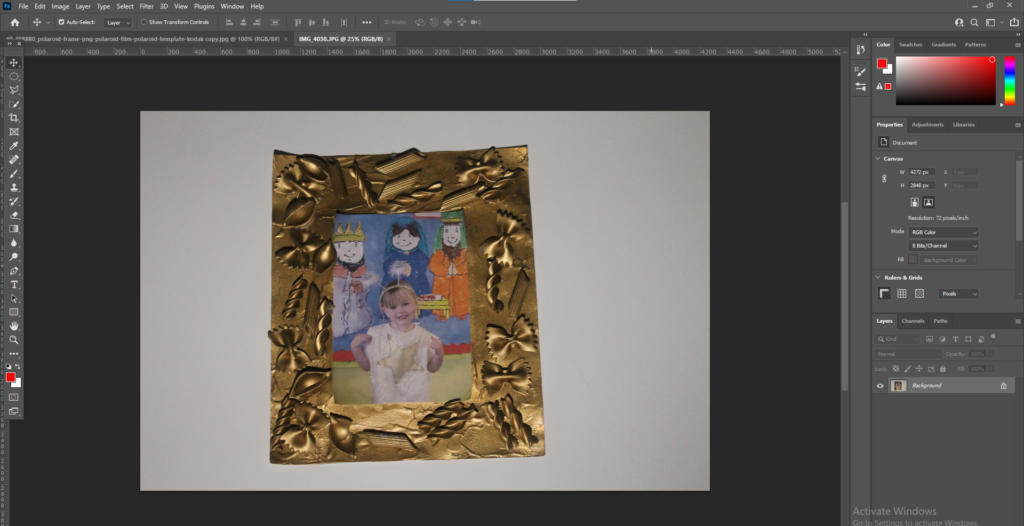
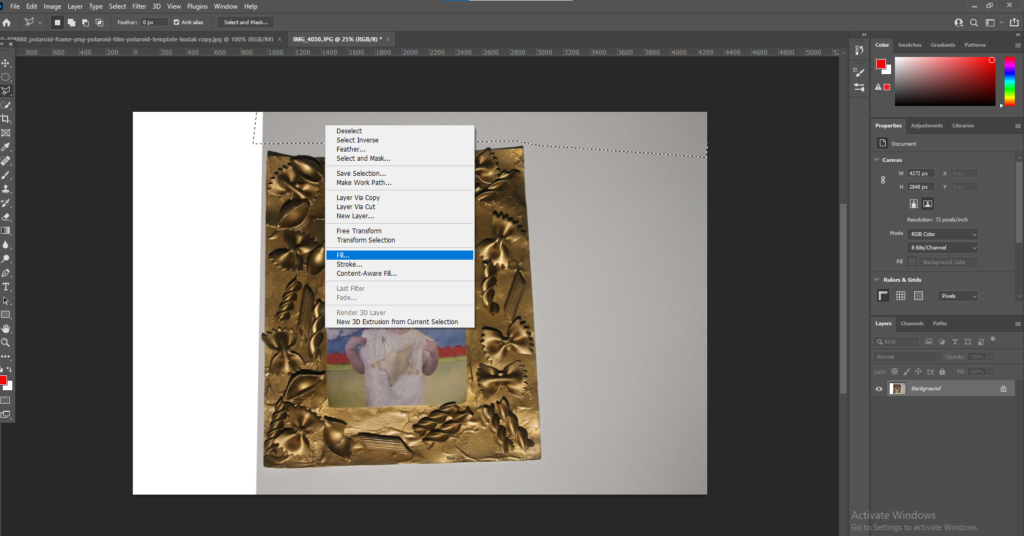

I wanted the images of the objects to have a plain white background so they blended in with the background of the paper in the photobook. To do this I started my using the Polygonal tool and selecting the majority of the background and right clicking on my mouse, it then brings up the option to fill the selected shape. I filled the selection with white to create the white background.
I then used the ‘Clone stamp tool’ to get the finer parts around the object in the image. I help the mouse over the white parts, pressed alt and then with a thin brush went around the object.
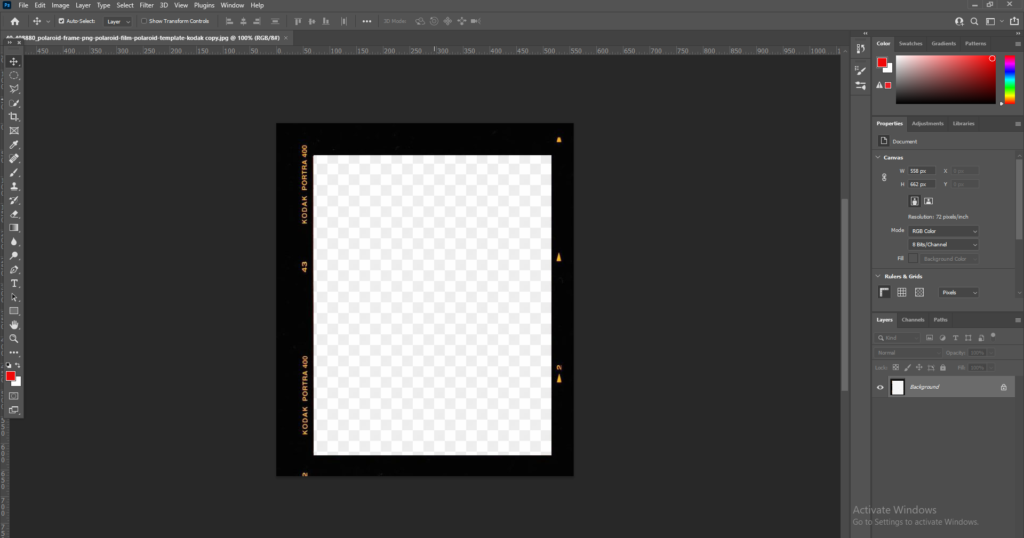
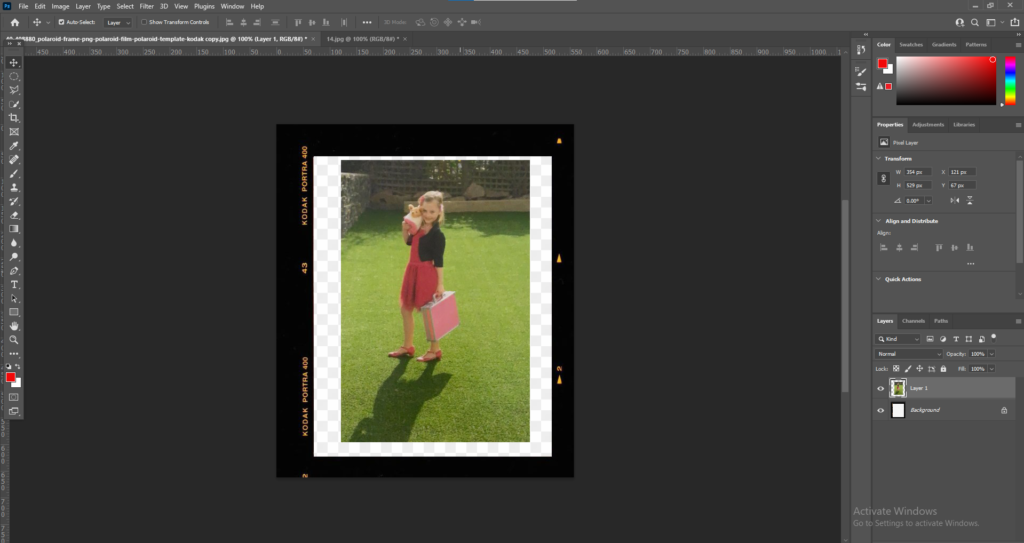
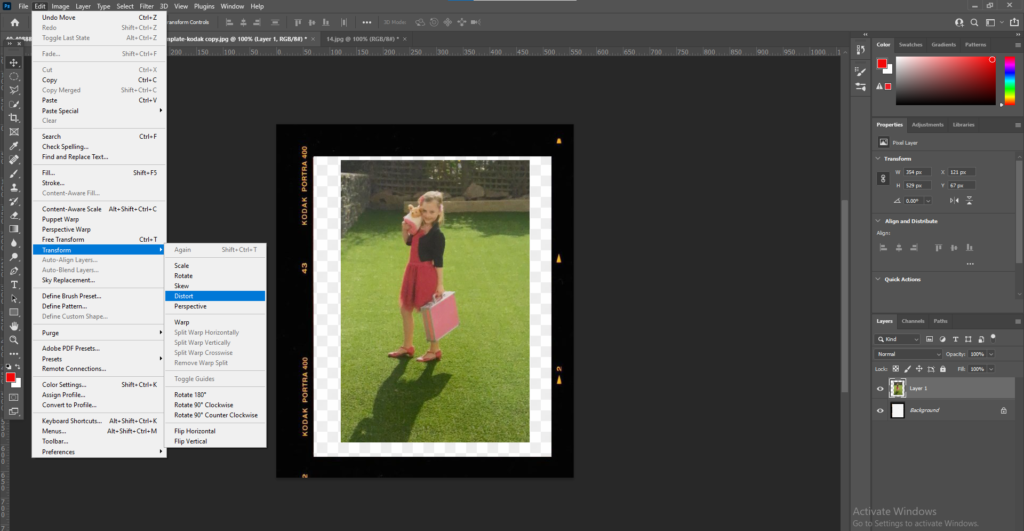
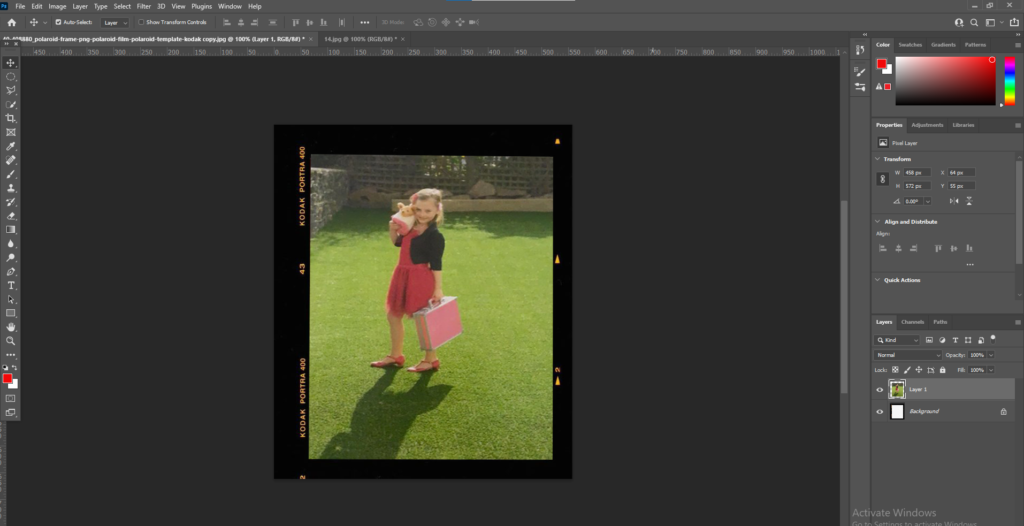
I put lots of my images into a polaroid template as I wanted to create a page in my book full of polaroid’s. To do this I downloaded a polaroid template and opened it within Photoshop. I then placed the image I wanted to use over the top of the template. Then I had to use the distort option in Edit > Transform > Distort and then move the edges to make the image fit into the template.



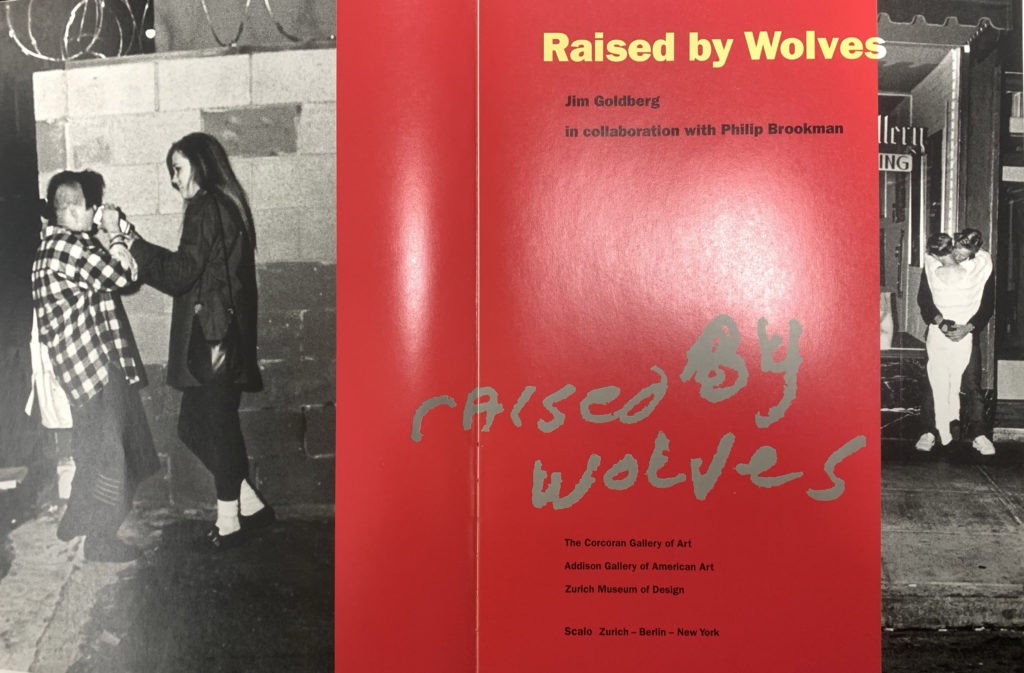
My main inspiration for my book was from Jim Goldberg’s book ‘Raised by Wolves’. His book was all about the homeless children fending for themselves in Los Angeles and San Francisco. For 10 years Jim Goldberg took to the streets to meet and photograph homeless runaways and then a gather collection of photographs, snippets of conversation, handwritten notes, drawings, snapshots which then created the book ‘Raised by wolves’. Although my book has a very different aspect and meaning behind it I liked the realistic and real view Goldberg took on his book. I also liked the presentation of Goldberg’s book and how he used text to add context and bring the book to life.
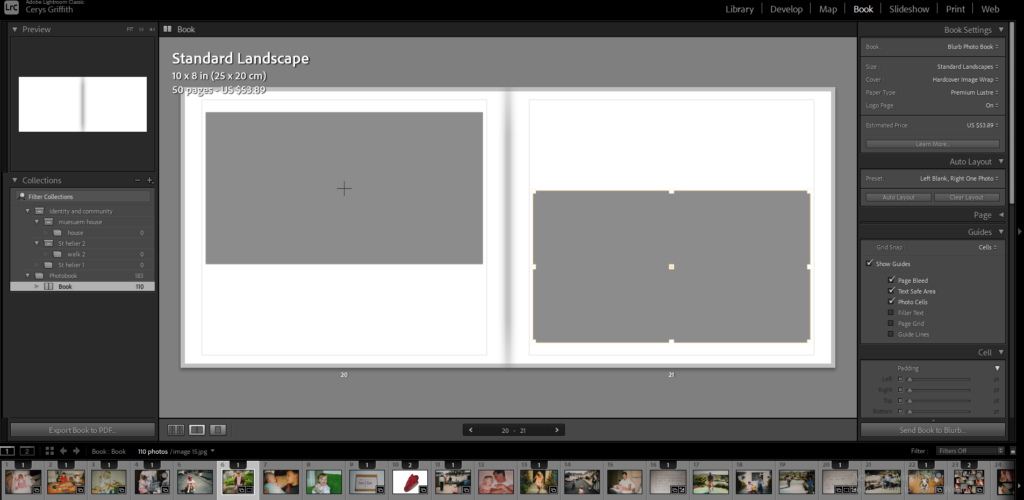


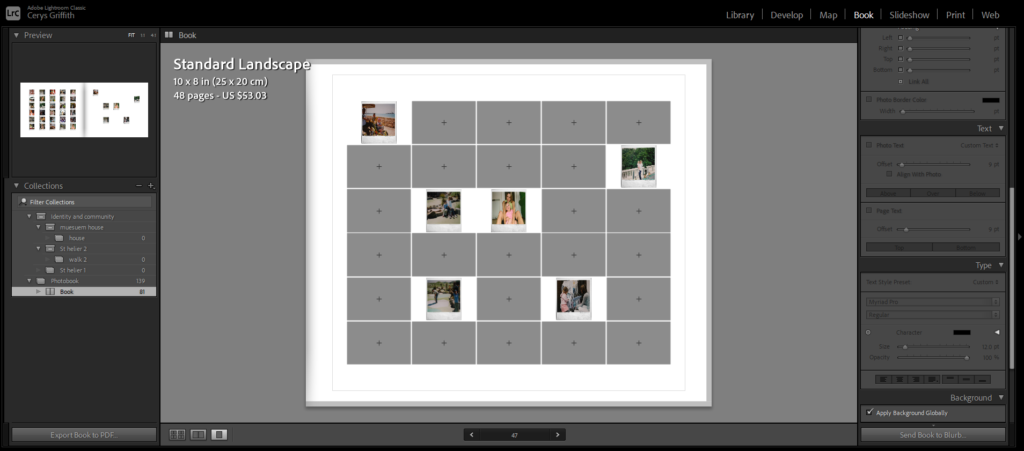
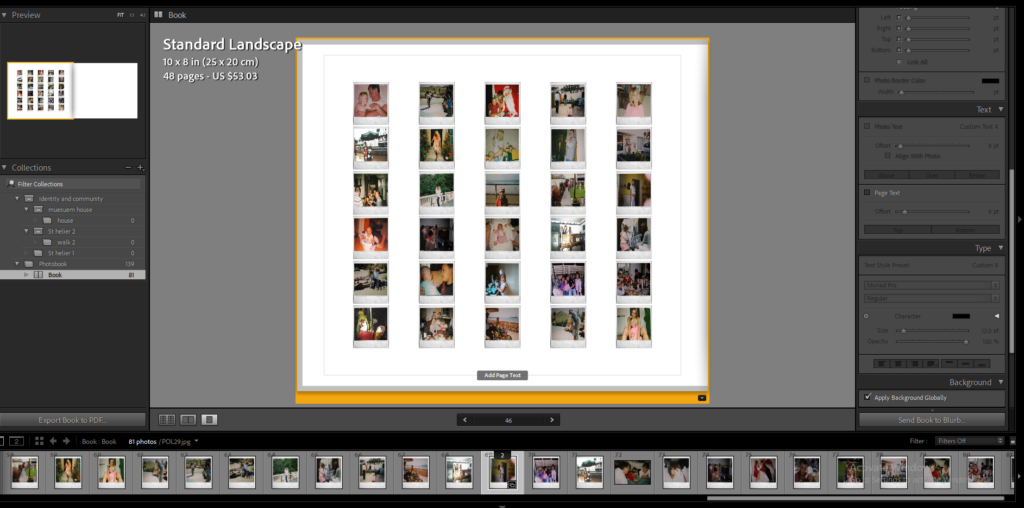
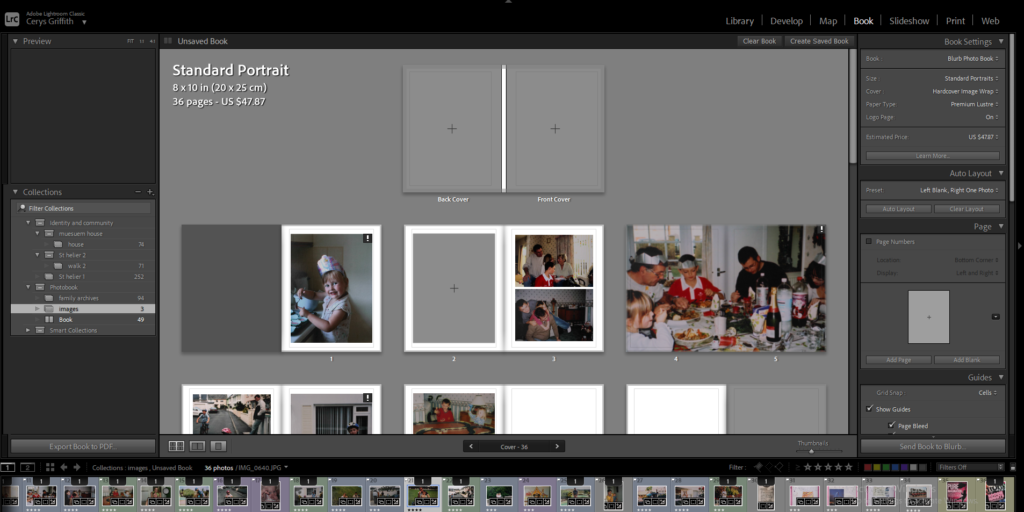
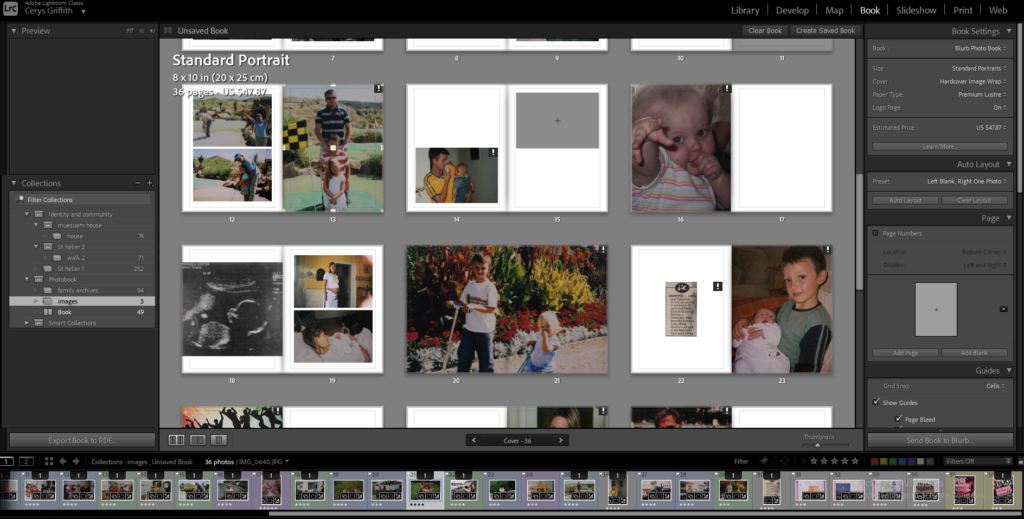
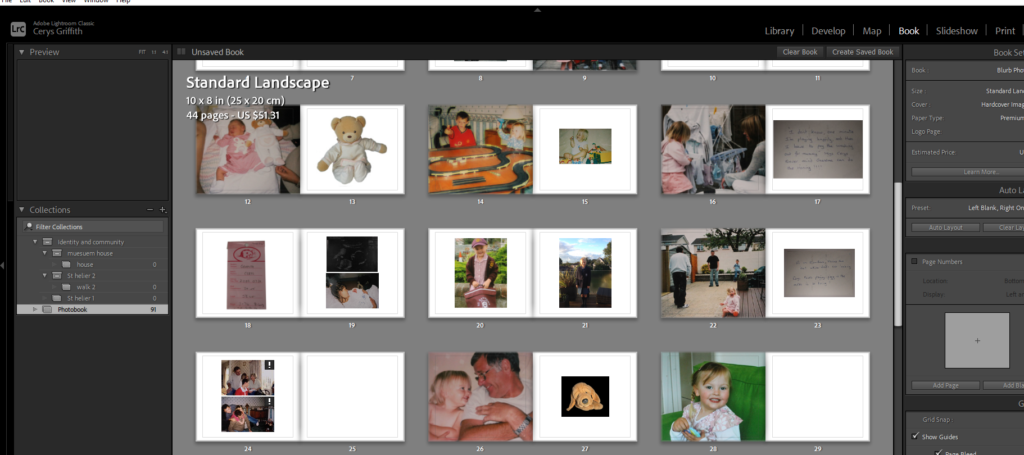

Here I am experimenting with my images to see how I want my final outcome to look and to experiment with different layout options. I experimented with full bleed, images on one side of the page , multiple images on one page. This helped me to gain more of an idea of how I wanted to present my final photobook as I got to see how different images work together and experiment with different juxtaposition’s.
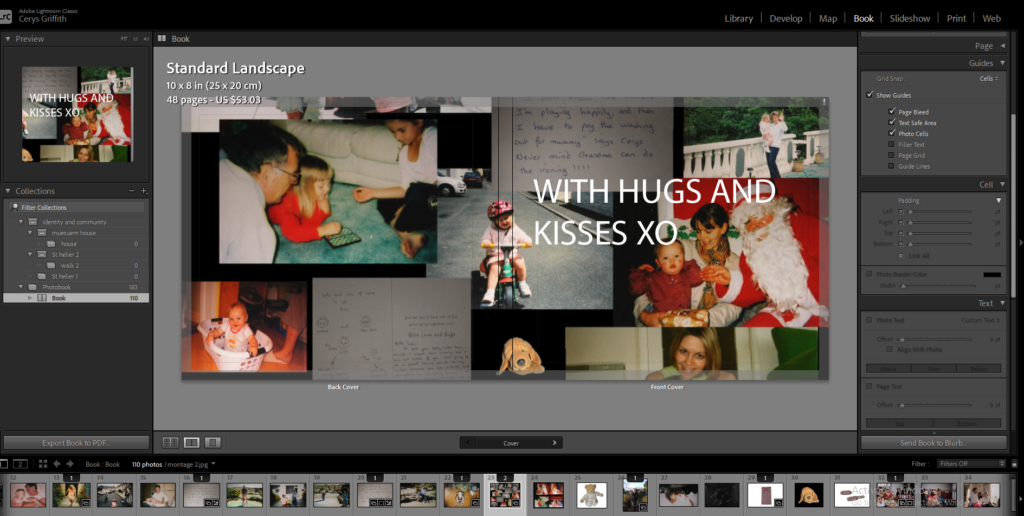

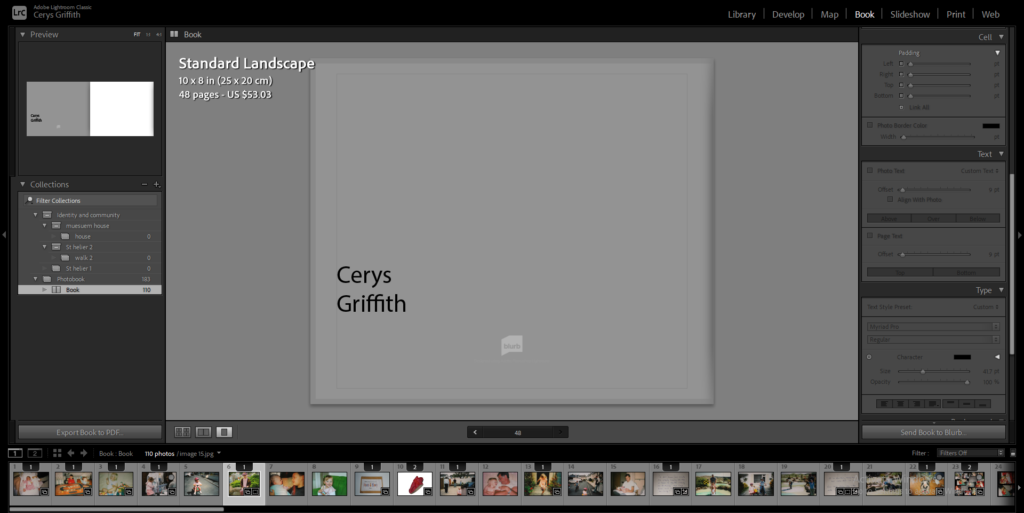
I then had to come up with a title for my book which I took from a card within the photobook. I then changed the the style of the writing to suit my photobook more. I decided to use the font ‘Ink Free’. I also added my name onto the back of my book and changed the colour of my background to a light grey colour.
Below are the images that I will be using for my photobook. All of my images were taken in Drum and Bass events that were upheld in Jersey and the UK. Some of these images where highly edited in the way that the photo has been fully manipulated. Whereas the others are pictures which have not been edited at all.


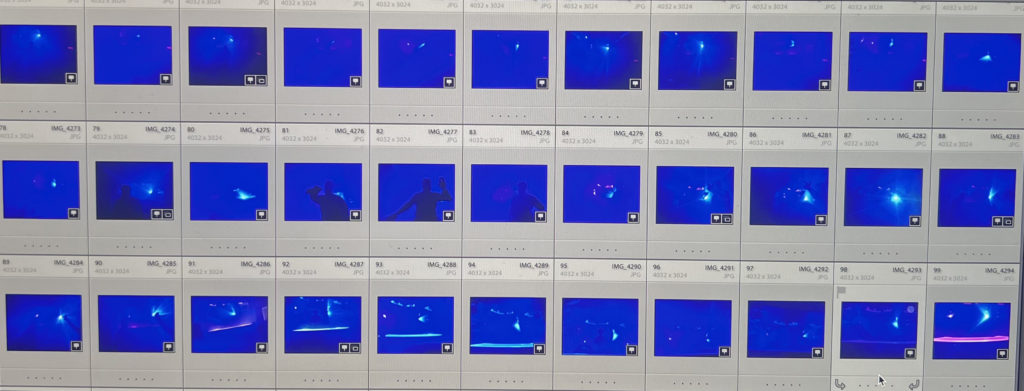

Write a book specification and describe in detail what your book will be about in terms of narrative, concept and design with reference to the same elements of bookmaking as above.
Narrative: What is your story?
Describe in 3 words?
Drum and Bass
A sentence
Showing outsiders the drum and bass culture from an insider’s perspective.
A paragraph
As an individual who is in the culture of the drum and bass scene. I want to be able to portray the drum and bass culture to outsiders, who don’t understand the drum and bass culture. Furthermore, giving a deeper understanding on drum and bass on what it is and how this culture is even relevant.
Design: consider the following
How you want your book to feel
I want a softcover on the outside and for the book to be glossy so it looks similar to a magazine.
Paper and Ink
I want the ink and paper to be glossy so that the bright colours in my images really stand for people to view.
Format, Size and orientation
My book is going to be a small square with the dimensions of: 7 x 7 in (18cm x 18cm).
Binding and cover
I am going to want the cover to have an image of a crowd of people. This is because I want people to get an understanding on what type of book they are looking at.
Title
My title is going to be called “The Sesh”. This is because some people will understand the slang term and some won’t. For those who don’t understand it, hopefully after looking at the book they will know what it means.
Design and layout
Single full bleed images
Single images non full bleed black border
three images on one page
Editing and sequencing
I want to sequence my images how people usually end up going through a night out, from the start to the end of a night out.
Images and Text

Above is the front and back cover of my photobook. To make it, I put the title “The Sesh” in the middle bottom of the book and included my name and title on the spine. The front and back cover on my book have a full bleed spread of an image of a crowd at one of the drum and bass events. I had to zoom the image out abit in order for it to sit perfectly across the front and back cover.


Above is the finalised layout of my photo book with images of the photo shoot i had taken, with finalised images selected across a sequence. During the creation of this photo book, I have experimented with different page layouts. For example, instead of having one photo on a page, I put three images laid out with two small ones on top and a bigger picture going across the bottom of the same page. In my opinion, this final photo book layout is the best due to the way the pictures are put together on each individual page.

Above is one of the first images that was edited/ manipulated in order to make the image look hallucinogenic. This appears to be an effective edit because I was able to manipulate the picture, in a way which people would believe that’s what it would look like to consume drugs at a drum and bass event. Moreover, this image would give outsiders an idea on the atmosphere to expect at these events being; loud, bright and wavy etc…

The next edited/ manipulated image was only changed from its original colour to black and white. This image is a golden gem to me because the picture was taken in a way where the flash stayed on with the persons face with the camera having a wide aperture. Therefore, the image looks edited however it isn’t and that is amazing because even if I wanted to recreate the image I couldn’t, making it a 1 of 1. Furthermore, the image once again could give off the impression of distortion/ hallucination. Giving people a further understanding on what the experience could be like at these drum and bass events.
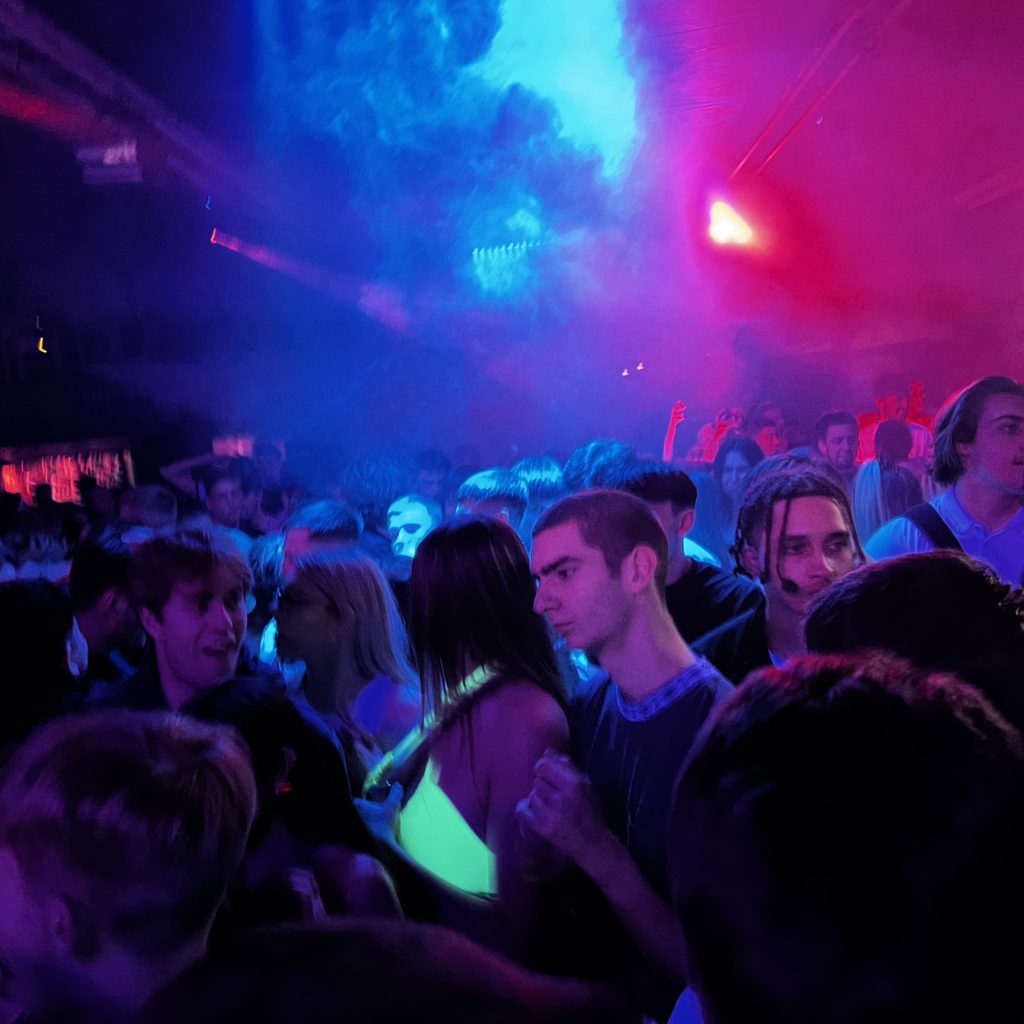
Finally, this is an image captured at one of the drum and bass events attended to get images. This image is strong I believe because it wasn’t edited, making the picture fall under the subclass of realism. Moreover, the image is engaging as I was able to capture the coloured smoke in the background of the image. This was effective as it made it engagging to viewers. Finally, the image being realistic is great for outsiders looking in because they are able to see an authentic image of what happens in these drum and bass events. From the atmosphere, emotions, facial expressions, clothing etc…

Above is an image that demonstrates the different types of options you can select in order to layout your pictures. This was great as I was able to move my layouts around to whatever I preferred.
The Outcome
The outcome from the photobook project is a book which reflects the culture of the drum and bass community. It shows what the potential experience of a night out to a drum and bass event could be like, from the start, to the end of the night. Moreover, the book is also meant to show “outsiders” who aren’t involved with the drum and bass community, showing what the community is about, cancelling out any stereotypes that people might assume within the drum and bass culture. For example, because of the what the music sounds like, people assume that people are aggressive at these events, causing fights between the crowd. However, as an insider to this culture, I can say that the people in the crowd are very in tuned with the music. Meaning that everyone is happy and not bothered by any pushing or shoving in the crowd. This is because, people accept that they are in a tight space which is the reason as to why pushing and shoving occurs occasionally on accident. Moreover, everyone in the crows is there for the same purpose which brings the community together as people share similar interests in music and clothing. Furthermore, the occuring themes of garments are sunglasses, bucket hats, costumes/ coordinated outfits and bumbags. Some of these garments such as sunglasses and bumbags, are mainly used so that people can carry drugs with and not have people look into there eyes for suspicion. Drugs are heavily influenced in this culture due to that fact that the audience are mainly young adults. Also, because people want to enhance their experience for a better time, memories and having moments of euphoria.
https://www.blurb.co.uk/bookstore/invited/9557142/c16ebd0fbd857f5b16ed60642793160214f86f16

Image Evaluation

Technical
Plan




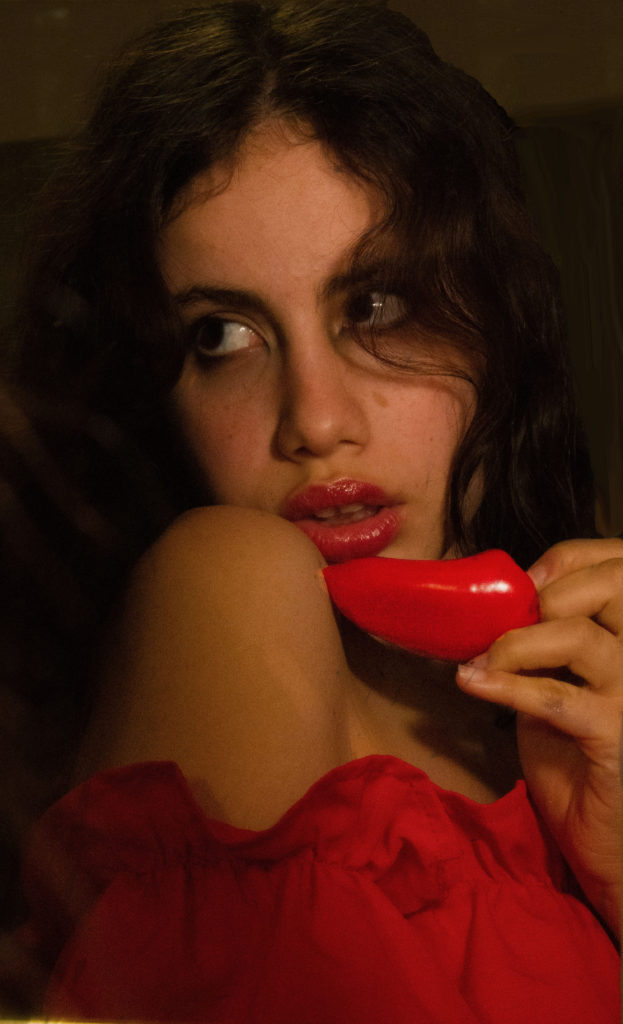









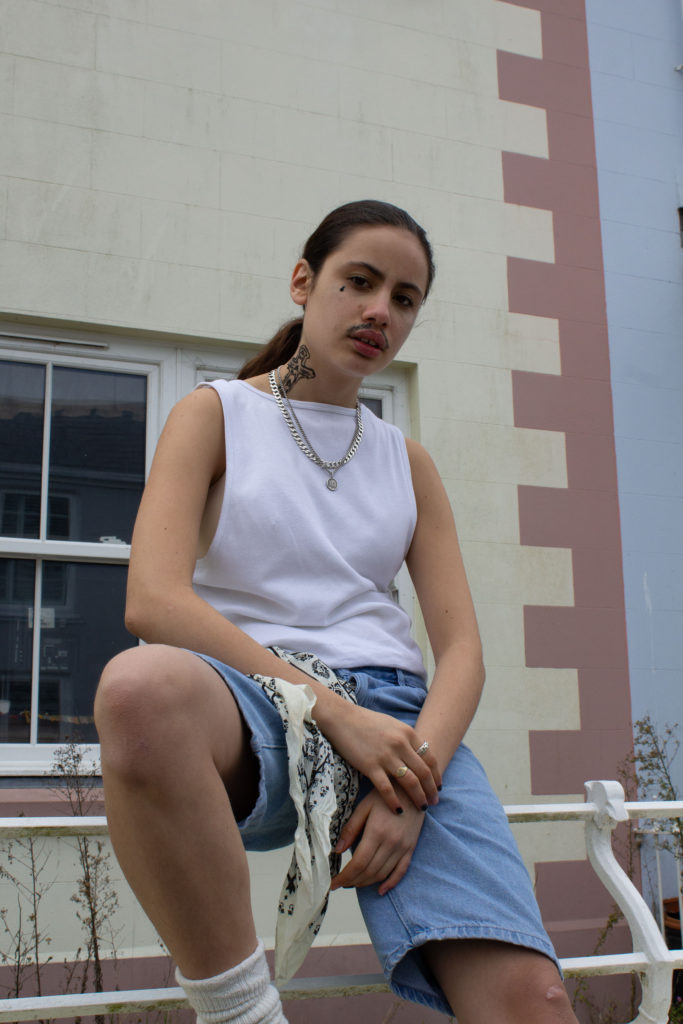

Edit






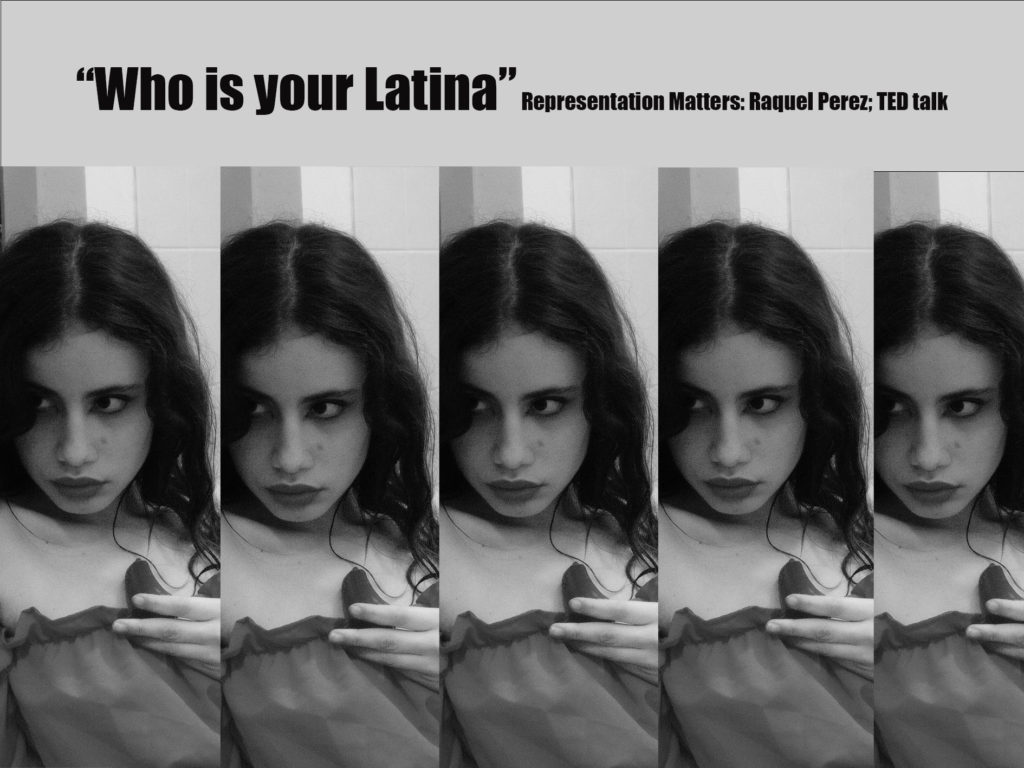
For my project I wanted to do some research on the consequences of Latinos stereotypes. I watched a TED by Raquel Perez which is about the representation of Latinos in society. She talks about how frustrating it is when you are not Latina ”enough” because we don’t know the language enough, the colour of our skin is not tan enough. Because we don’t look like the Latino stereotype that we see on the TV therefore we must not be. I decided to edit one of my images and called it “who is your Latina”. The meaning behind the title is to question society how or who do we have to be to be considered Latina. To edit my image is use photoshop, I started by selecting my image. I copy, pasted my image to another white plain image. I had to cut it so it fit proportionally and paste the same image five times. I wanted to put the title at the top of my collage so I selected a rectangle above. I then used the eye dropper tool which helps you to have a sample of a colour of your image. Finally I wrote the title and flattened the image.
The images seen on the pages of this newspaper supplement are extracted from a variety of projects and final outcomes produced over a two-year academic programme of study by a group of A-Level photography students at Hautlieu School. In their final year the themes of Identity and Community offered a specific focus and through a series of creative challenges students developed a body of work that were inspired, partly from visiting heritage institutions to learn about aspects of Jersey’s unique history of immigration and exploring migrant communities and neighbourhoods in St Helier in a series of photo-walks. In the classroom additional inspiration was provided from workshops on NFTs (non-fungible token) and digital art, embroidery and textile art, animation and film-making, zine and photobook design led by professional artists, designers and teachers.
As part of the research and contextual studies students were asked to engage with some of the key questions raised by the Government of Jersey’s Island Identity project and explore through their own photographic studies how they interpret and identify distinctive qualities of island life. What can we learn from looking at a set of photographs produced by young islanders? At first sight they show us a seemingly random set of images of places, people and objects – some familiar, others surprising. On closer inspection each image is a visual sign and also a conundrum. For example, a fish stuffed in a plastic bottle may ask us to consider more closely our marine environment, commercial fishing or food consumption. As a combined sequence of images they represent different views that in many ways comment on a wider discussion on some of the primary objectives explored in the Island Identity project, such as ‘how we see ourselves’ and ‘how others see us.’
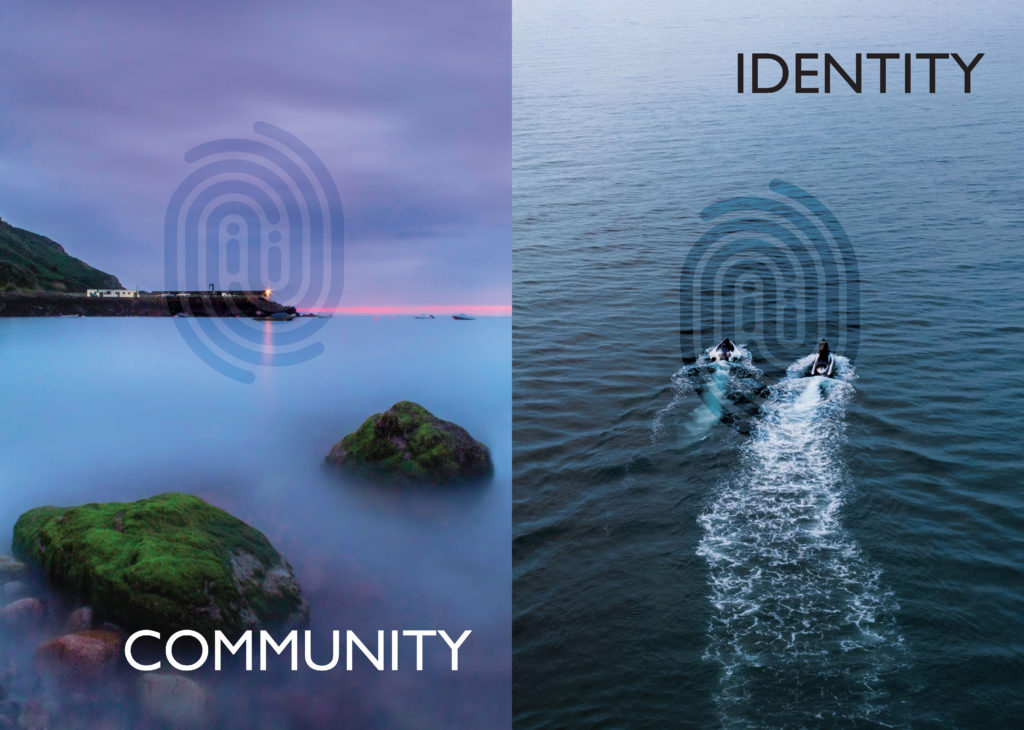
The newspaper was kindly sponsored by Deputy Carolyn Labey, Minister for International Development and Assistant Chief Minister who in her foreword shares her personal thoughts on what makes Jersey special to her in context of the Island Identity project led by her department. She says, ‘identity involves searching our soul, engaging with difficult issues, and asking not only who we are, but how others see us and what a vision for the future might look like. The perspective of students and young people in this debate is critical. Identity is a broad and far-reaching concept, one unique to all of us. This collection of images recognises both our differences and our commonalties. These times may be uncertain, but in my view the topic – ‘what Jersey means to you’ – is a fundamentally optimistic and forward-looking one.’
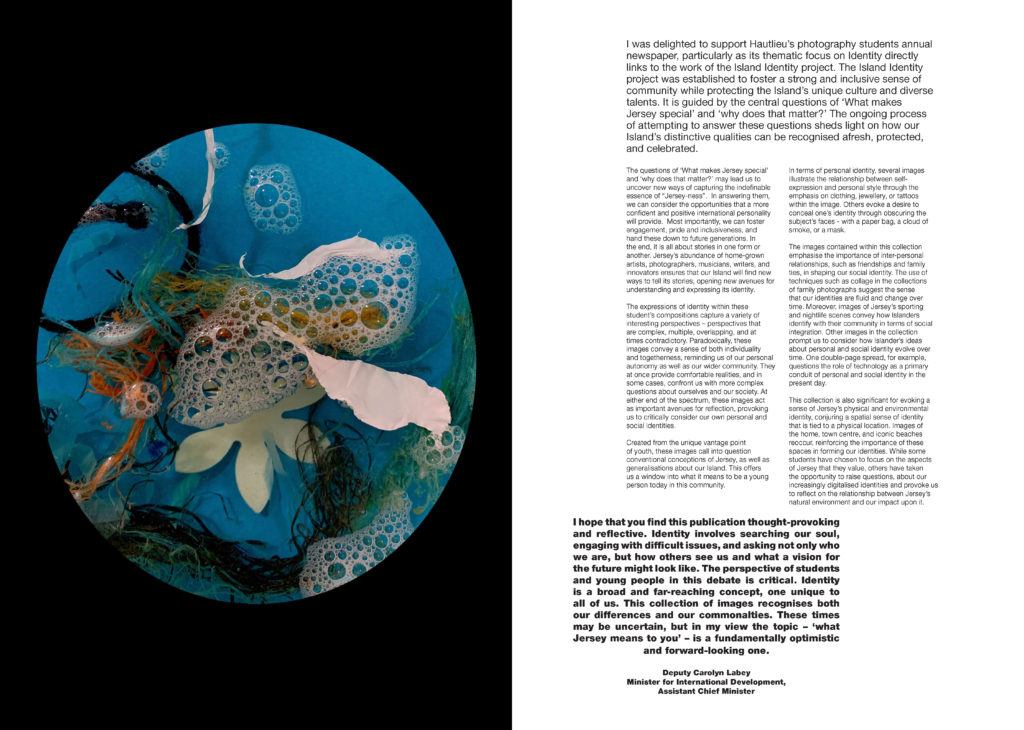




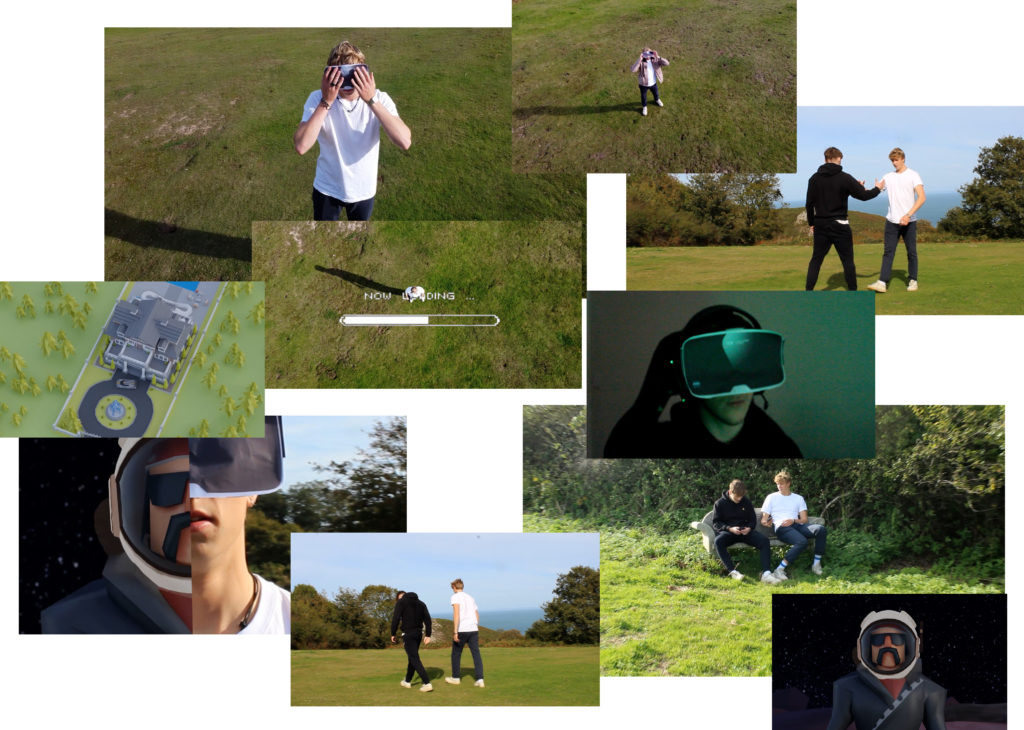
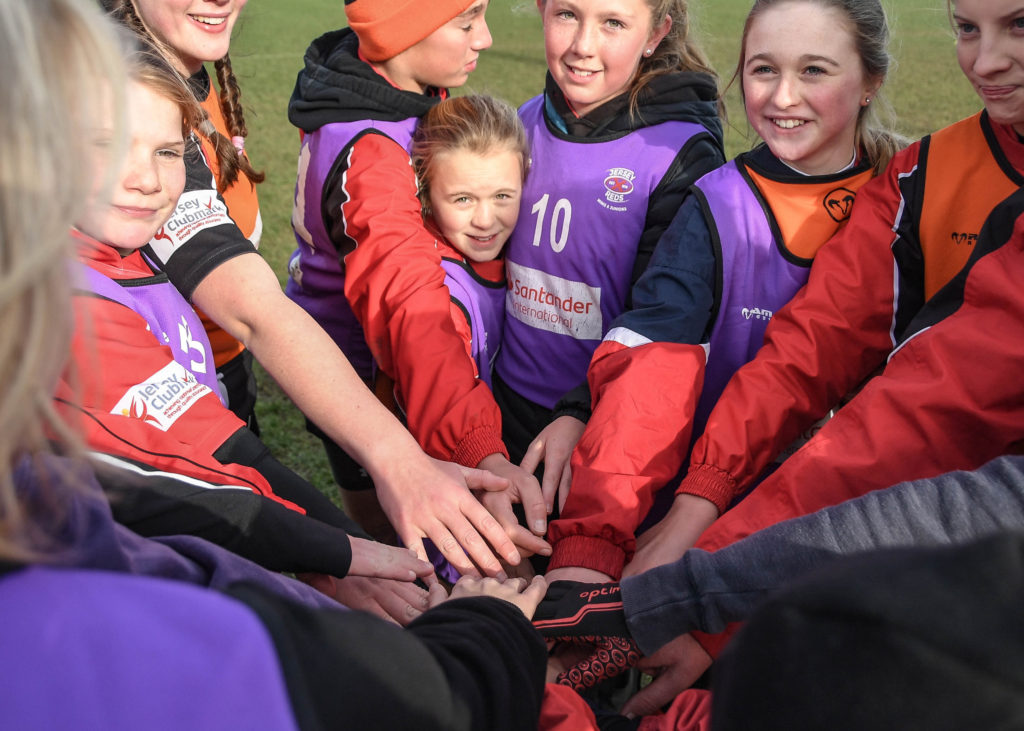
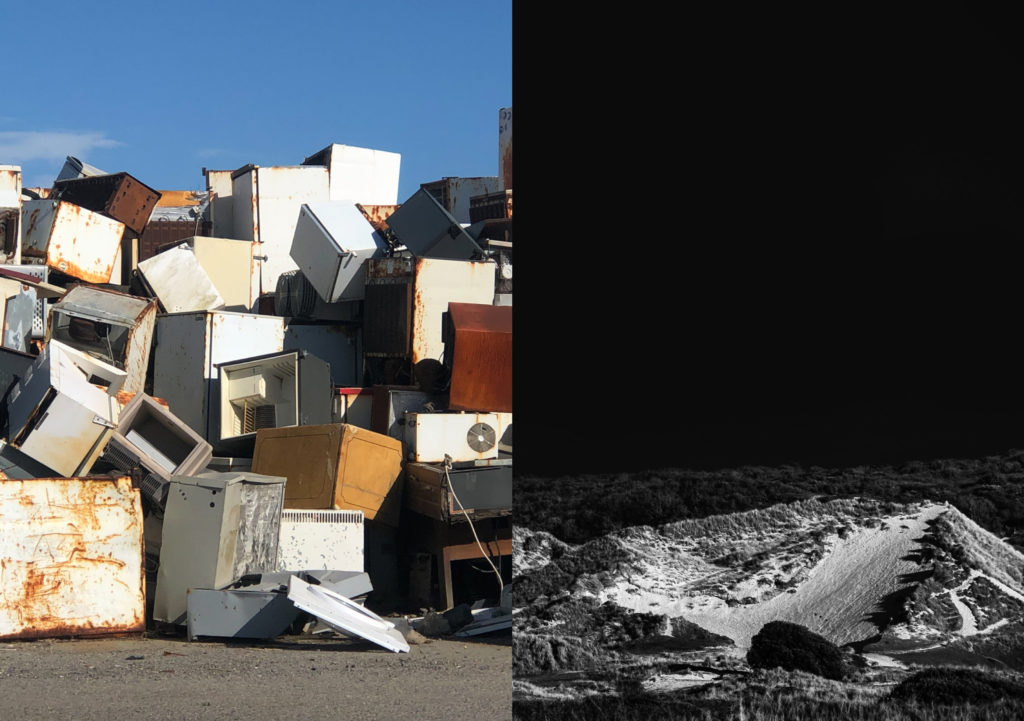
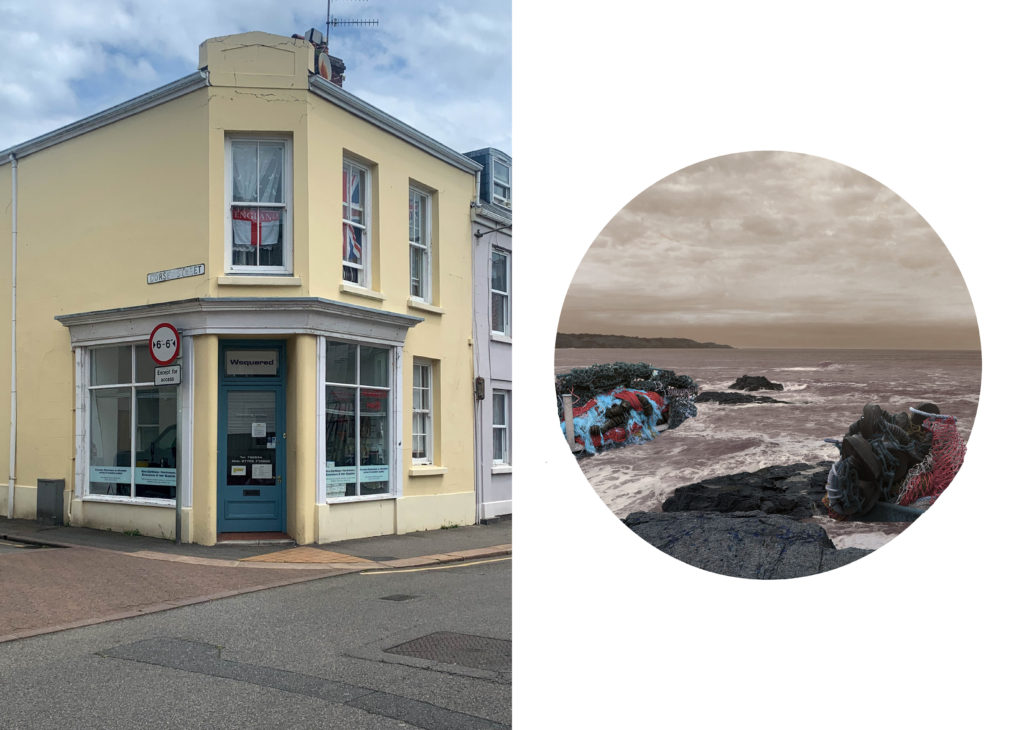











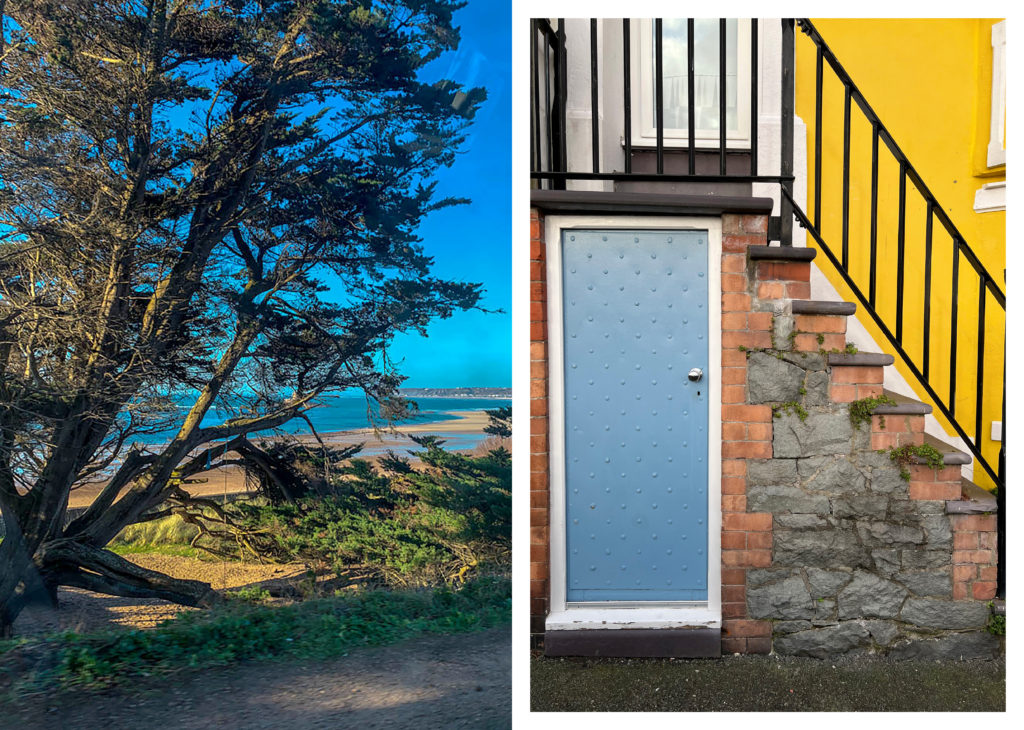


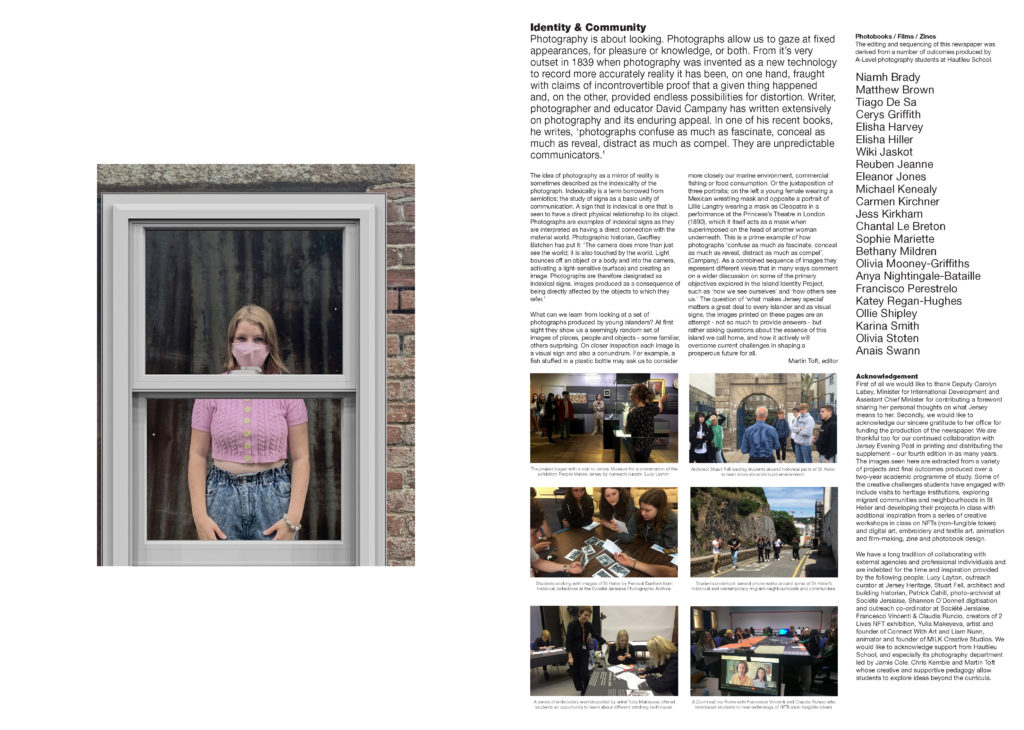
The Identity and Community newspaper is the fourth supplement produced in collaboration between Hautlieu School Photography Department and Jersey Evening Post. In 2018 the first issue was The Future of St Helier and last year the themes of Love & Rebellion explored experiences of isolation and lockdown during the coronavirus pandemic. Photographer and teacher Martin Toft, comments: ‘The question of ‘what makes Jersey special’ matters a great deal to every islander and as visual signs, the images printed on these pages are an attempt – not so much to provide answers – but rather asking questions about the essence of this island we call home, and how it actively will overcome current challenges in shaping a prosperous future for all.’
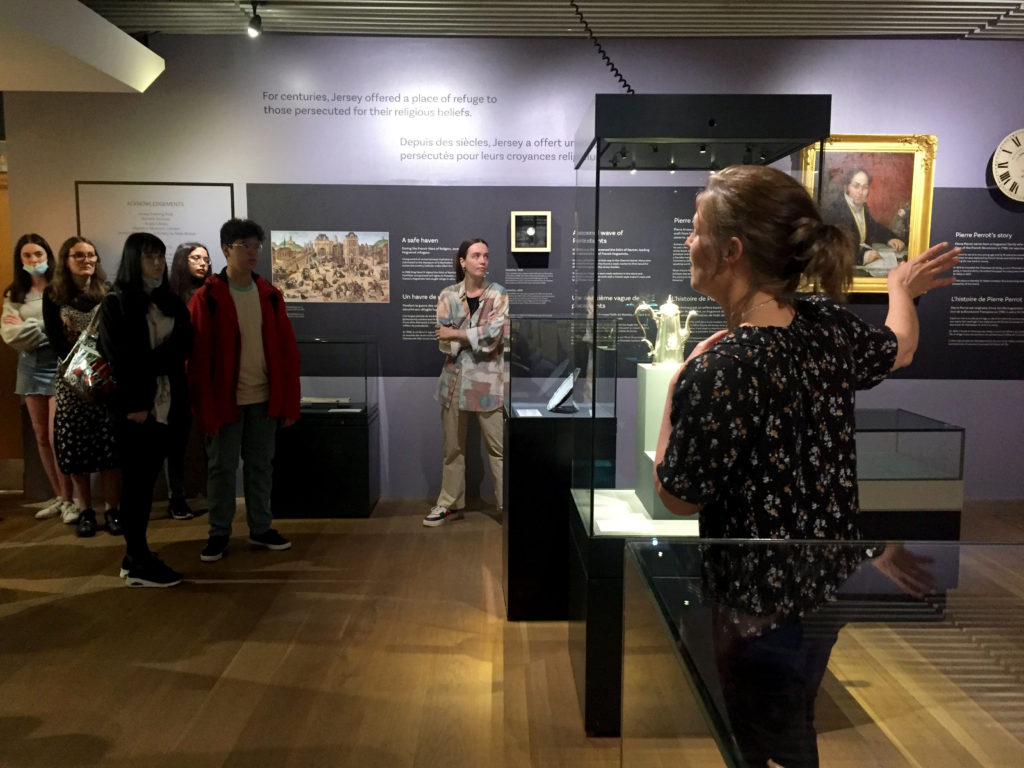

The image on the left is my image in the newspaper.
All the images above are extracted from 2 years of work from various different projects and students within our A level photography course.
I enjoyed creating the newspaper as I feel it was a good way for me to reflect on all my work from all my projects since the beginning of Year 12. It was a completely new form of presentation compared to how I normally present my work. I felt the newspaper allowed us as a class to show the public all the different topics we have worked on and create a newspaper on all different topics and tie it all together under the topic of ‘Identity and Community’. Creating the newspaper allowed all the photography students to represent their strengths within photography. I used my images from Year 12 as I felt they best fit into the ‘Identity and community’ theme of the newspaper. I chose an image from my zine project when we explored the different cultures within Jersey and photographing different heavily cultured areas to show all the identities lying within Jersey. I liked my image as in the windows where flags representing different cultures with a clothing shop underneath. I am very happy with the final outcome of the newspaper and feel it represents all of our projects well.
Overall, I really enjoyed being part of the newspaper as I thought it was a great way to show all of our progress from year 12 up till now. It showed the variety of different outcomes we came up with throughout many of our different personal photoshoots. Putting all of our best images together was a good idea as everyone would be able to see the different topics and ideas we have worked on in the past 2 years. I used most of my images from year 12 as I had the most opportunities to go out in that year and take different photoshoots as well as some challenging ones as taking candid street photography and of people in their work environment. I think that displaying our work all together is a clever way and we were able to summarise our two years of taking photographs into one place.
The images seen on the pages of this newspaper supplement are extracted from a variety of projects and final outcomes produced over a two-year academic programme of study by a group of A-Level photography students at Hautlieu School. In their final year the themes of Identity and Community offered a specific focus and through a series of creative challenges students developed a body of work that were inspired, partly from visiting heritage institutions to learn about aspects of Jersey’s unique history of immigration and exploring migrant communities and neighbourhoods in St Helier in a series of photo-walks. In the classroom additional inspiration was provided from workshops on NFTs (non-fungible token) and digital art, embroidery and textile art, animation and film-making, zine and photobook design led by professional artists, designers and teachers.
As part of the research and contextual studies students were asked to engage with some of the key questions raised by the Government of Jersey’s Island Identity project and explore through their own photographic studies how they interpret and identify distinctive qualities of island life. What can we learn from looking at a set of photographs produced by young islanders? At first sight they show us a seemingly random set of images of places, people and objects – some familiar, others surprising. On closer inspection each image is a visual sign and also a conundrum. For example, a fish stuffed in a plastic bottle may ask us to consider more closely our marine environment, commercial fishing or food consumption. As a combined sequence of images they represent different views that in many ways comment on a wider discussion on some of the primary objectives explored in the Island Identity project, such as ‘how we see ourselves’ and ‘how others see us.’

The newspaper was kindly sponsored by Deputy Carolyn Labey, Minister for International Development and Assistant Chief Minister who in her foreword shares her personal thoughts on what makes Jersey special to her in context of the Island Identity project led by her department. She says, ‘identity involves searching our soul, engaging with difficult issues, and asking not only who we are, but how others see us and what a vision for the future might look like. The perspective of students and young people in this debate is critical. Identity is a broad and far-reaching concept, one unique to all of us. This collection of images recognises both our differences and our commonalties. These times may be uncertain, but in my view the topic – ‘what Jersey means to you’ – is a fundamentally optimistic and forward-looking one.’


The Identity and Community newspaper is the fourth supplement produced in collaboration between Hautlieu School Photography Department and Jersey Evening Post. In 2018 the first issue was The Future of St Helier and last year the themes of Love & Rebellion explored experiences of isolation and lockdown during the coronavirus pandemic. Photographer and teacher Martin Toft, comments: ‘The question of ‘what makes Jersey special’ matters a great deal to every islander and as visual signs, the images printed on these pages are an attempt – not so much to provide answers – but rather asking questions about the essence of this island we call home, and how it actively will overcome current challenges in shaping a prosperous future for all.’

The images seen on the pages of this newspaper supplement are extracted from a variety of projects and final outcomes produced over a two-year academic programme of study by a group of A-Level photography students at Hautlieu School. In their final year the themes of Identity and Community offered a specific focus and through a series of creative challenges students developed a body of work that were inspired, partly from visiting heritage institutions to learn about aspects of Jersey’s unique history of immigration and exploring migrant communities and neighbourhoods in St Helier in a series of photo-walks. In the classroom additional inspiration was provided from workshops on NFTs (non-fungible token) and digital art, embroidery and textile art, animation and film-making, zine and photobook design led by professional artists, designers and teachers.
As part of the research and contextual studies students were asked to engage with some of the key questions raised by the Government of Jersey’s Island Identity project and explore through their own photographic studies how they interpret and identify distinctive qualities of island life. What can we learn from looking at a set of photographs produced by young islanders? At first sight they show us a seemingly random set of images of places, people and objects – some familiar, others surprising. On closer inspection each image is a visual sign and also a conundrum. For example, a fish stuffed in a plastic bottle may ask us to consider more closely our marine environment, commercial fishing or food consumption. As a combined sequence of images they represent different views that in many ways comment on a wider discussion on some of the primary objectives explored in the Island Identity project, such as ‘how we see ourselves’ and ‘how others see us.’

The newspaper was kindly sponsored by Deputy Carolyn Labey, Minister for International Development and Assistant Chief Minister who in her foreword shares her personal thoughts on what makes Jersey special to her in context of the Island Identity project led by her department. She says, ‘identity involves searching our soul, engaging with difficult issues, and asking not only who we are, but how others see us and what a vision for the future might look like. The perspective of students and young people in this debate is critical. Identity is a broad and far-reaching concept, one unique to all of us. This collection of images recognises both our differences and our commonalties. These times may be uncertain, but in my view the topic – ‘what Jersey means to you’ – is a fundamentally optimistic and forward-looking one.’



















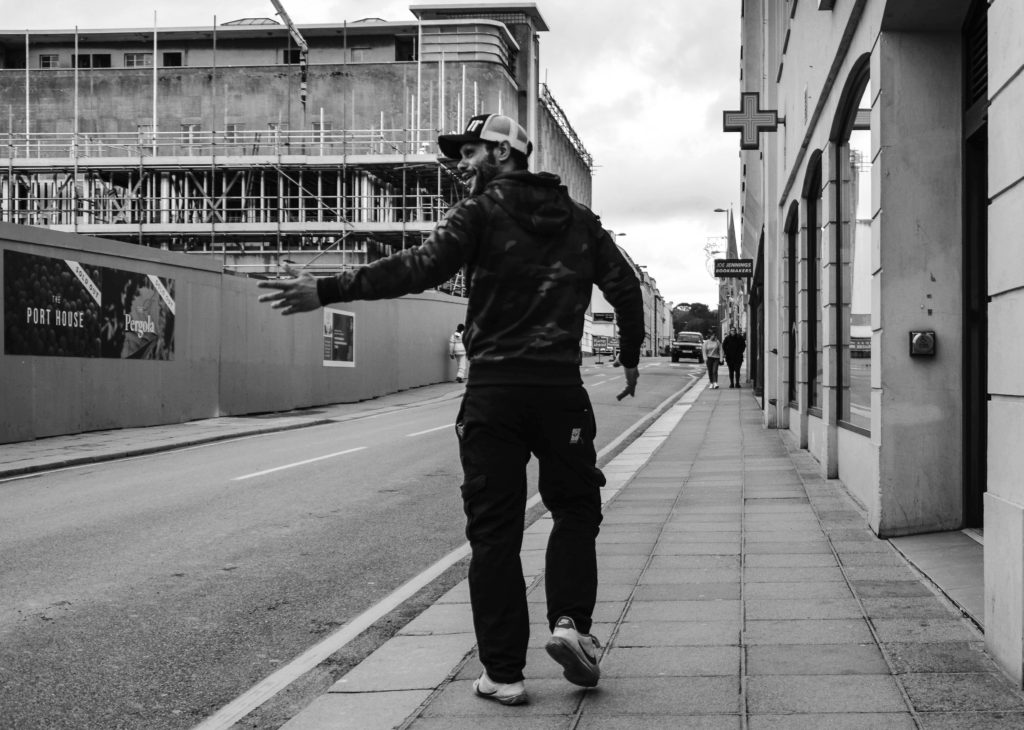




The Identity and Community newspaper is the fourth supplement produced in collaboration between Hautlieu School Photography Department and Jersey Evening Post. In 2018 the first issue was The Future of St Helier and last year the themes of Love & Rebellion explored experiences of isolation and lockdown during the coronavirus pandemic. Photographer and teacher Martin Toft, comments: ‘The question of ‘what makes Jersey special’ matters a great deal to every islander and as visual signs, the images printed on these pages are an attempt – not so much to provide answers – but rather asking questions about the essence of this island we call home, and how it actively will overcome current challenges in shaping a prosperous future for all.’





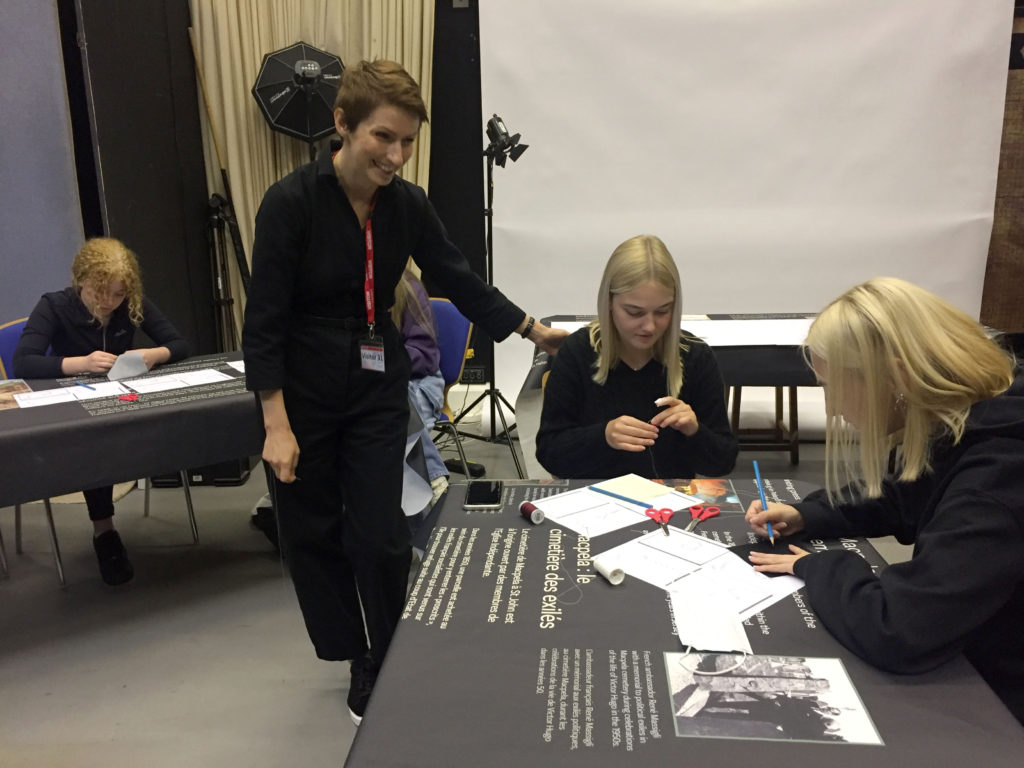

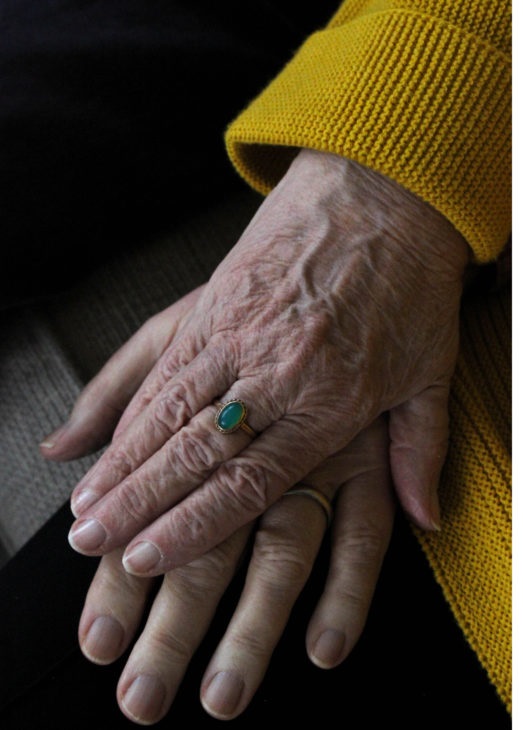

I found the experience of being a part of this newspaper very interesting, with being able to figure out which of my images would look best and experimenting with the layout, and which photographs look best as a small series. The images of mine that have been displayed in the newspaper include the small image on the bottom left, which displays a landscape that shows industrial structures edited into St. Ouens sand dunes, from my Anthropocene project. As well as this a full bleed image of my grandparents hands taken from my personal study project is featured as well as a double page spread of stitched photographs from the same project. It was a really exciting opportunity having my images displayed in a public place and having more people view my work. I think that the series of stitched images work best in the newspaper as it links to island identity in the sense that it touches on how my family moved to Jersey from England, which is similar to many other people who live on the island. Overall, I am very proud of the outcome of this newspaper.
Once I had my final prints back I wanted to make sure I display them in a good and clear way. I started off with picking out my background and I wanted to display them on one big white backdrop foam. However as I had a few images I needed to glue two foams together to make one massive one

I started off with arranging my images in different ways and making sure I select the right images, this made me not use two of my small images as they didnt look presentable and didnt go together

I then decided to use 3 strips of background and glued them onto the back of my backdrop as i had to join two big pieces of foam together, doing it this way would secure them together.


I then started to play around with my images again and tried to find the correct order. I started off with using small images in the centre but I realised I didn’t like it that way and it left too many gaps on the outside. I then placed by largest images on the centre and immediately realised I preferred it that way as it drew your eye onto the large images and then the small a2 ones around the outside, this created a nice contrast between the colour and black and white images.

Once I was happy with my images I decided to spray glue them and stick them onto the foam. I was very happy with my final displayed outcome as I fit my images onto one massive foam and it showed all the different aspects of my work.
The images seen on the pages of this newspaper supplement are extracted from a variety of projects and final outcomes produced over a two-year academic programme of study by a group of A-Level photography students at Hautlieu School. In their final year the themes of Identity and Community offered a specific focus and through a series of creative challenges students developed a body of work that were inspired, partly from visiting heritage institutions to learn about aspects of Jersey’s unique history of immigration and exploring migrant communities and neighbourhoods in St Helier in a series of photo-walks. In the classroom additional inspiration was provided from workshops on NFTs (non-fungible token) and digital art, embroidery and textile art, animation and film-making, zine and photobook design led by professional artists, designers and teachers.
As part of the research and contextual studies students were asked to engage with some of the key questions raised by the Government of Jersey’s Island Identity project and explore through their own photographic studies how they interpret and identify distinctive qualities of island life. What can we learn from looking at a set of photographs produced by young islanders? At first sight they show us a seemingly random set of images of places, people and objects – some familiar, others surprising. On closer inspection each image is a visual sign and also a conundrum. For example, a fish stuffed in a plastic bottle may ask us to consider more closely our marine environment, commercial fishing or food consumption. As a combined sequence of images they represent different views that in many ways comment on a wider discussion on some of the primary objectives explored in the Island Identity project, such as ‘how we see ourselves’ and ‘how others see us.’

The newspaper was kindly sponsored by Deputy Carolyn Labey, Minister for International Development and Assistant Chief Minister who in her foreword shares her personal thoughts on what makes Jersey special to her in context of the Island Identity project led by her department. She says, ‘identity involves searching our soul, engaging with difficult issues, and asking not only who we are, but how others see us and what a vision for the future might look like. The perspective of students and young people in this debate is critical. Identity is a broad and far-reaching concept, one unique to all of us. This collection of images recognises both our differences and our commonalties. These times may be uncertain, but in my view the topic – ‘what Jersey means to you’ – is a fundamentally optimistic and forward-looking one.’






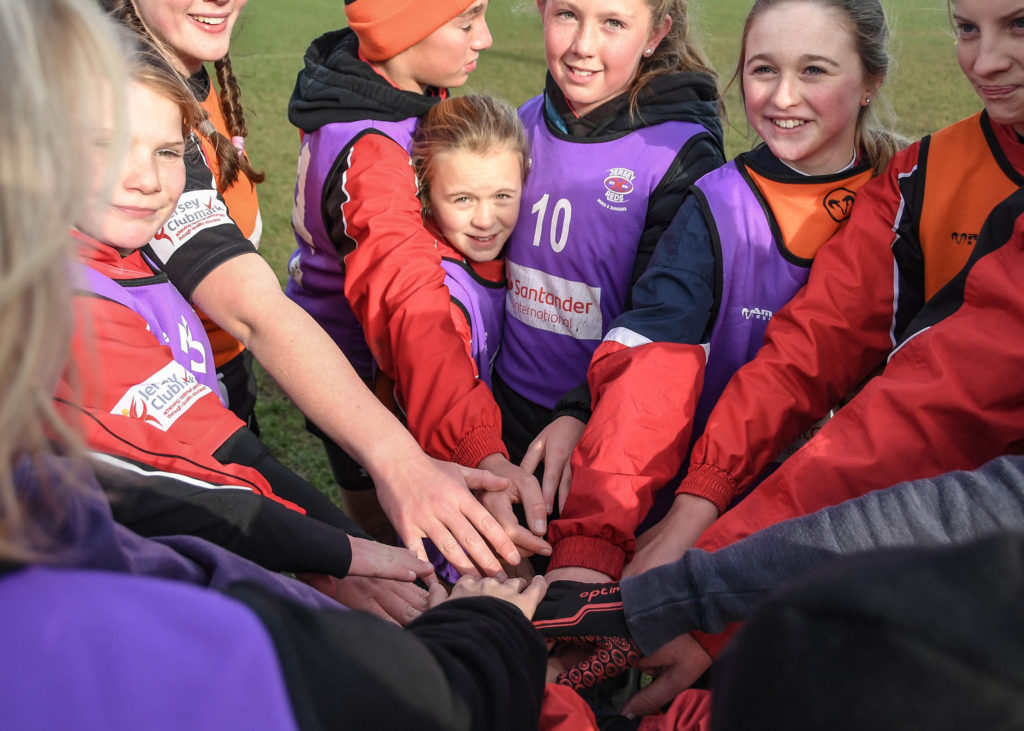

















The Identity and Community newspaper is the fourth supplement produced in collaboration between Hautlieu School Photography Department and Jersey Evening Post. In 2018 the first issue was The Future of St Helier and last year the themes of Love & Rebellion explored experiences of isolation and lockdown during the coronavirus pandemic. Photographer and teacher Martin Toft, comments: ‘The question of ‘what makes Jersey special’ matters a great deal to every islander and as visual signs, the images printed on these pages are an attempt – not so much to provide answers – but rather asking questions about the essence of this island we call home, and how it actively will overcome current challenges in shaping a prosperous future for all.’




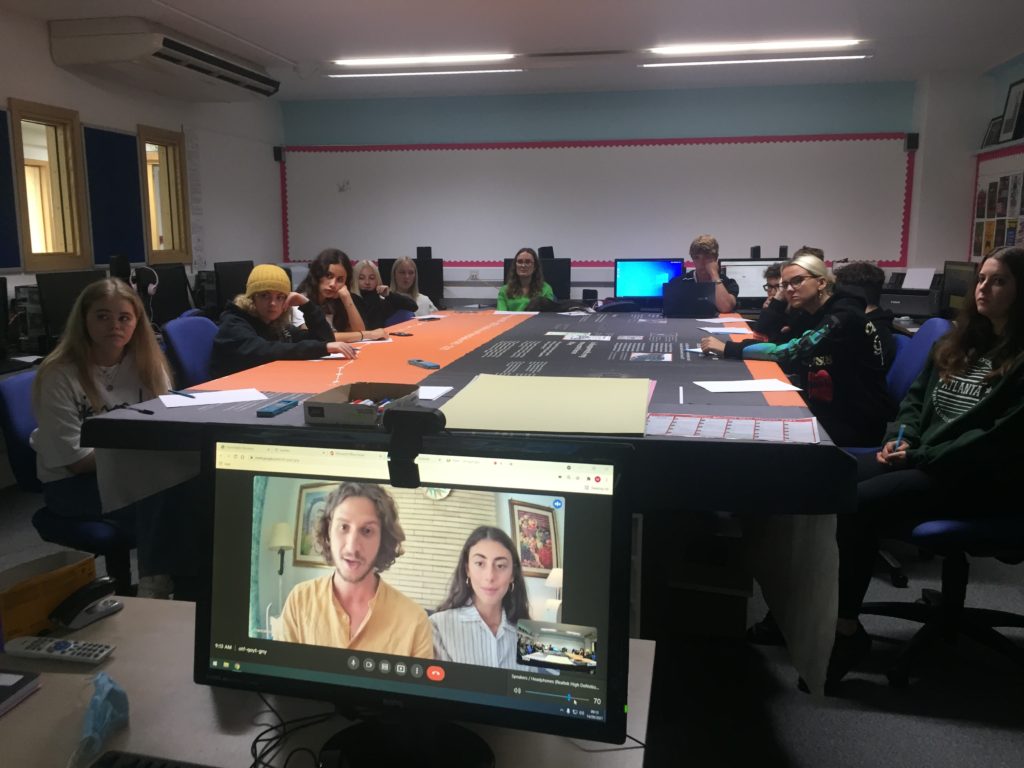

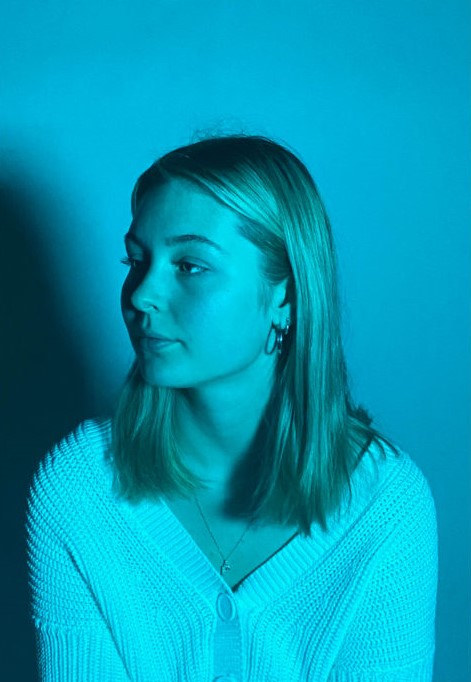
I enjoyed being part of a group when working on the Island Identity and Community project, because there was a variety of different ideas and perspectives, as well as creative processes. Additionally, all the members of the group shared the workload, which made the whole experience more enjoyable and less stressful. My contribution to this project was the portrait above. I captured this image in Year 12, during our studio portraits and headshots topic. I think that this portrait encapsulates the theme of identity more than community. This is because the image could be interpreted as a person hiding their identity (the shadows on the side of the person’s face) due to things such as fear or shame. Overall I am very happy that I was a part of this project, and how the final version turned out.
For our final project of the whole photography A – level all students put together a newspaper based on the theme of ‘Identity and community’. There was a mixture of old and new images from every project.
When creating and designing the newspaper I made multiple My aim was to experiment with different sizes, styles and themes. The task was to create different pages with various different layouts.
To insert my images I had to create a box using the rectangle frame tool, I made the box the size I wanted my image to be.


Then I began editing my images to suit the themes and colours I was aiming for. I adjusted the brightness, contrast and exposure of all the images and cropped and rotated them when I needed to.
I began experimenting with the different layouts.


